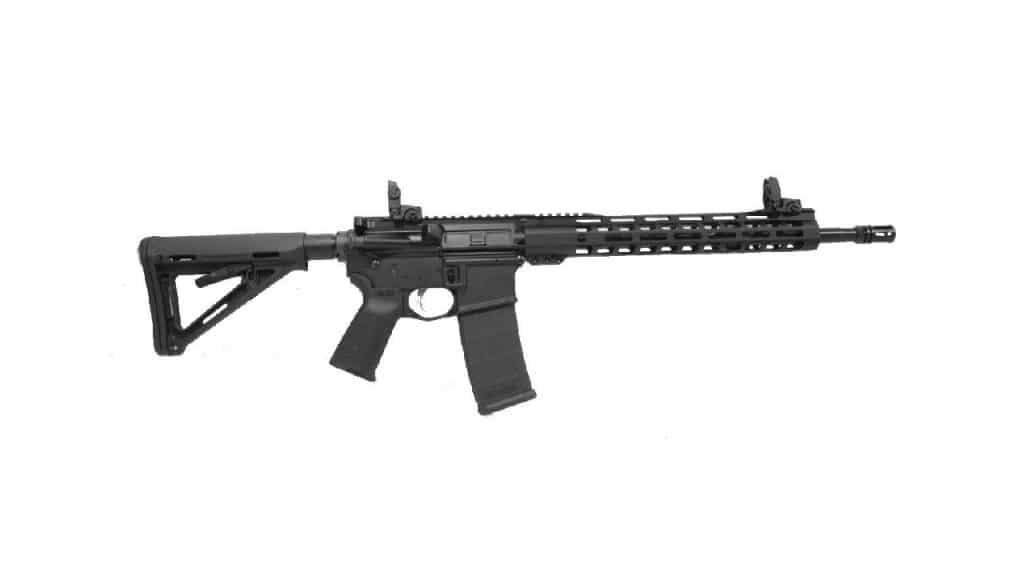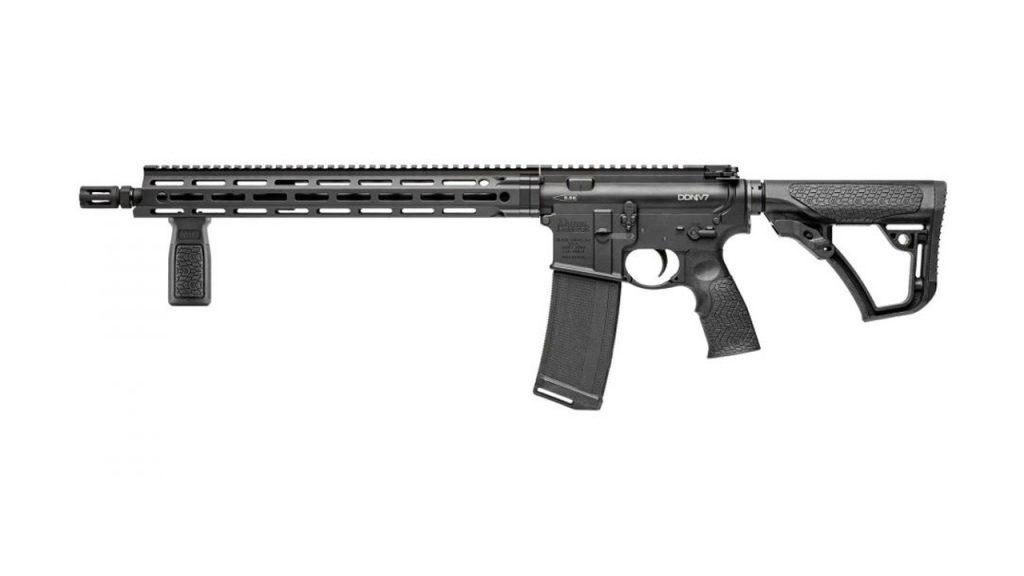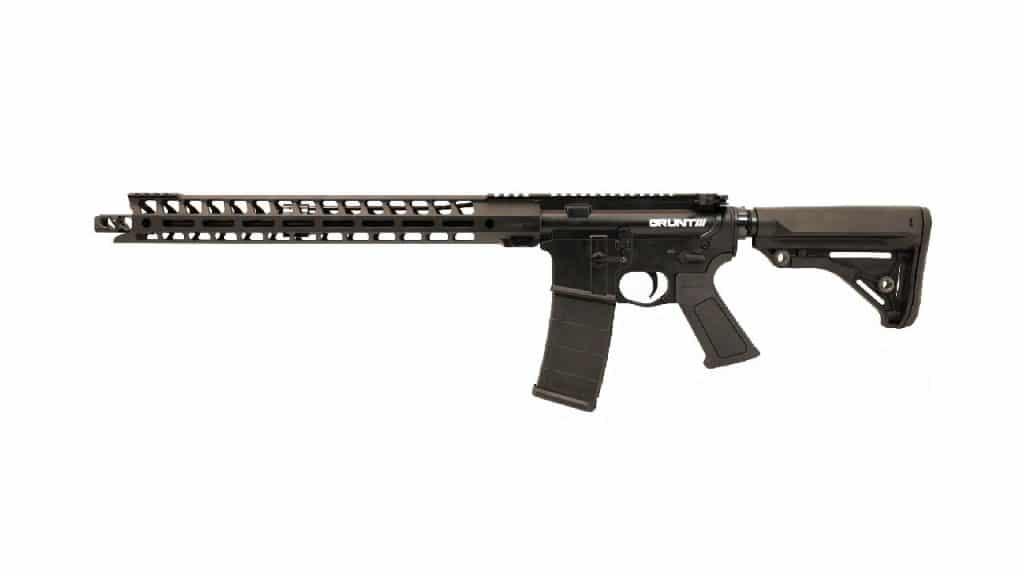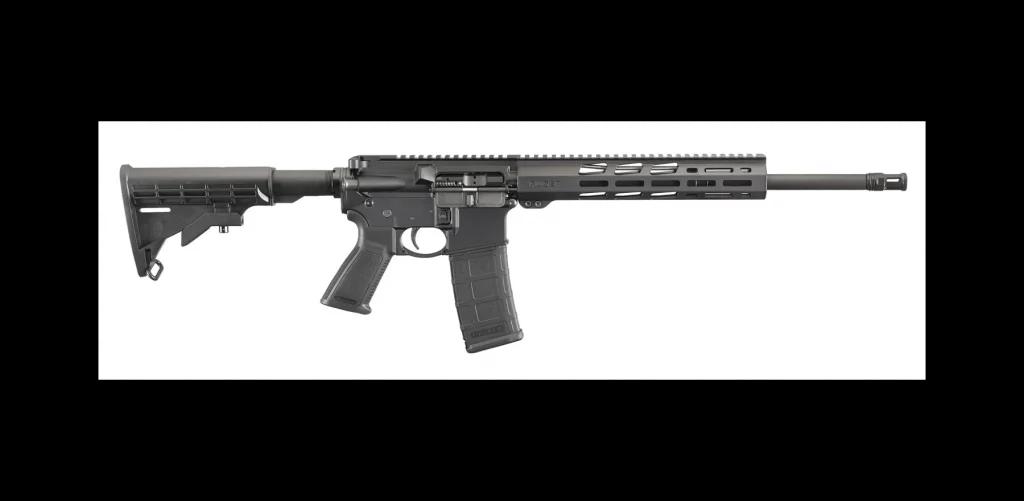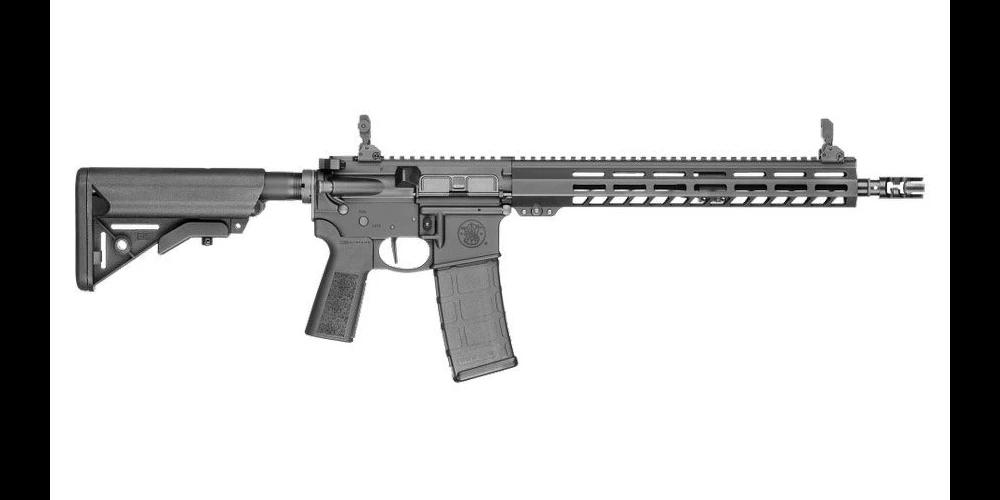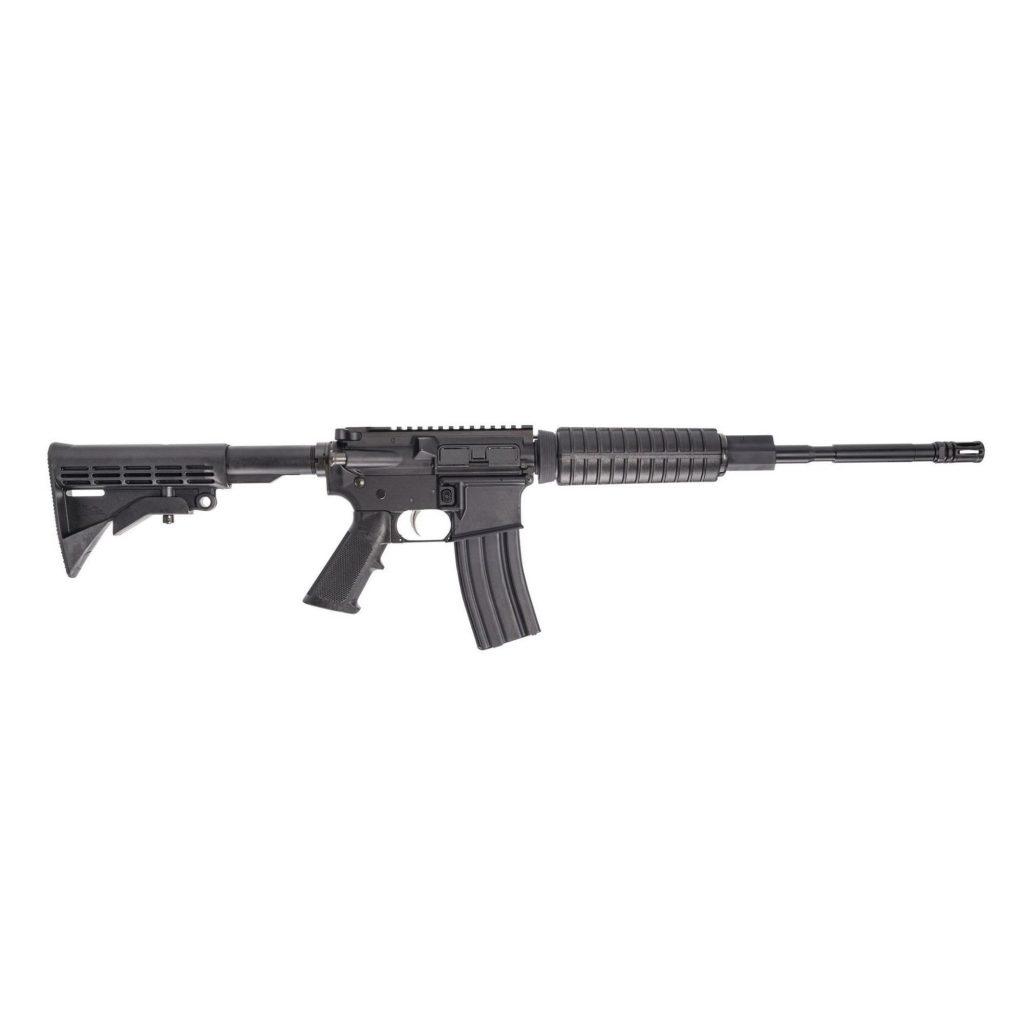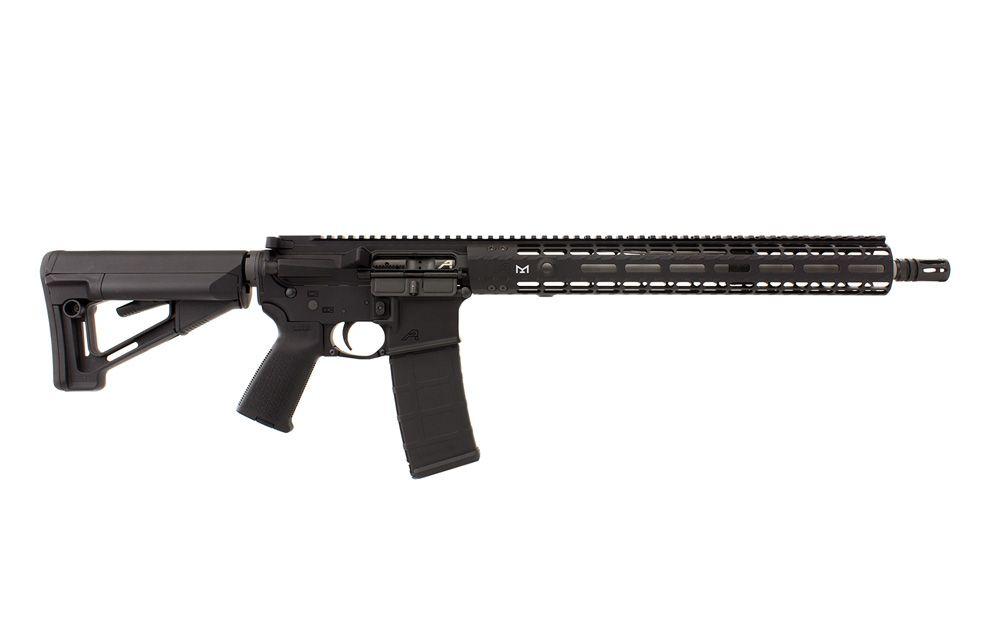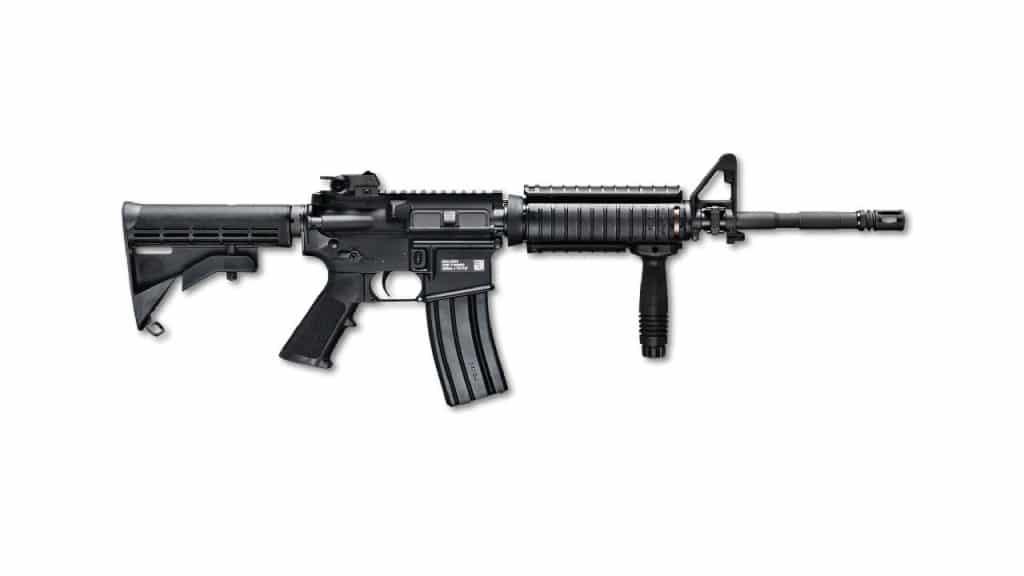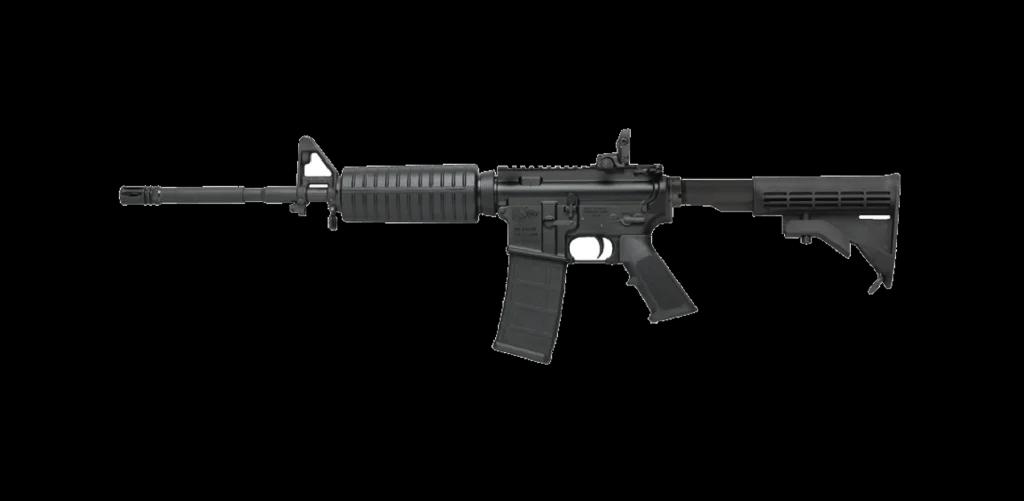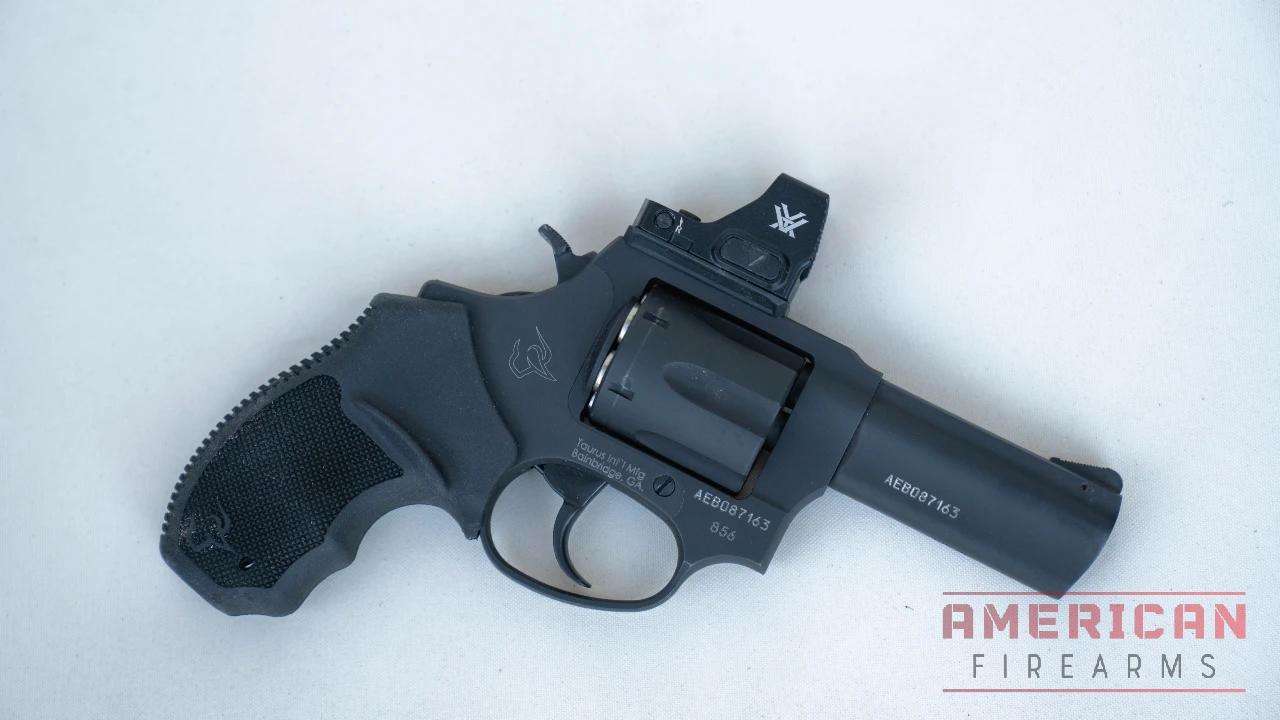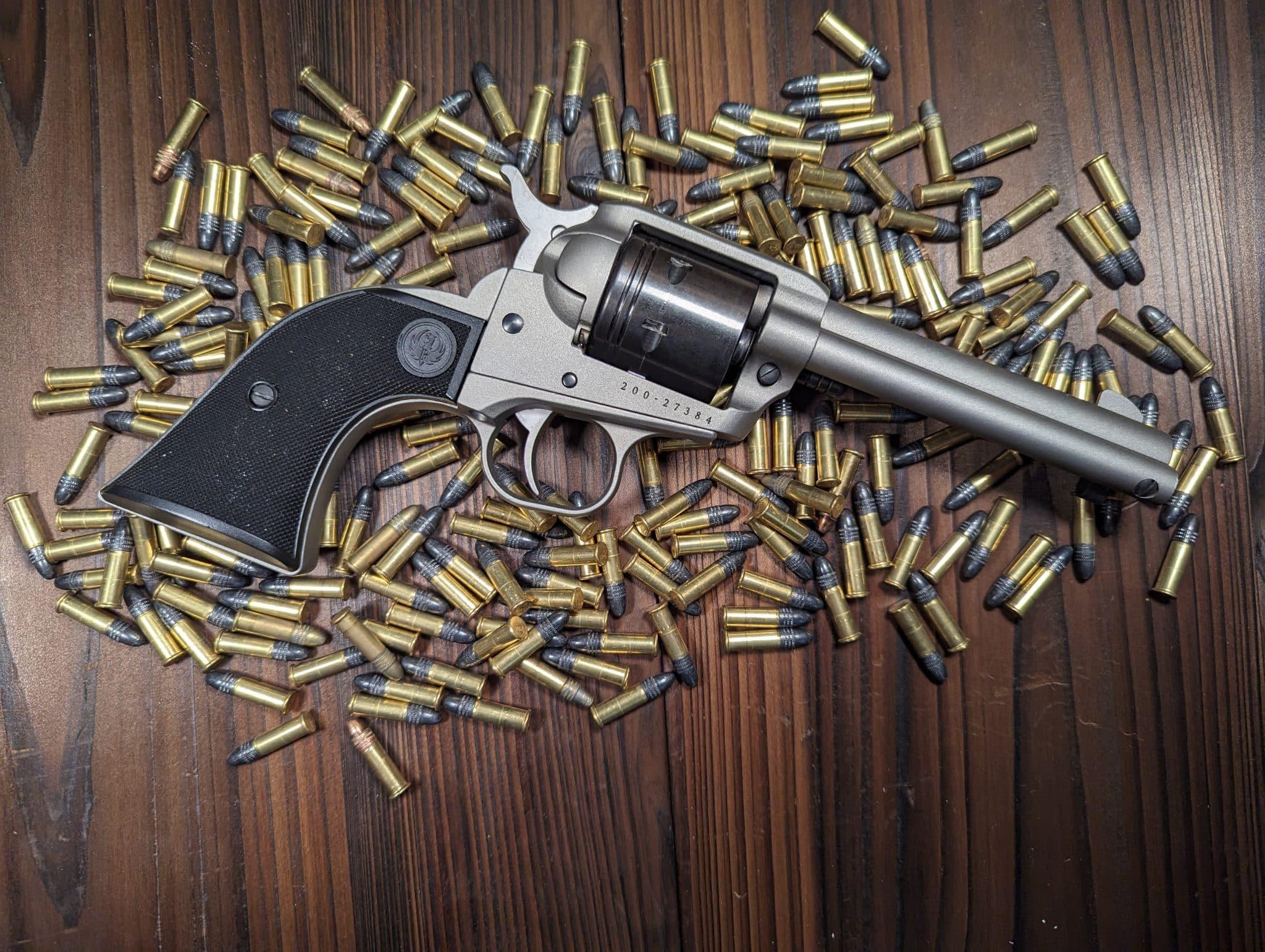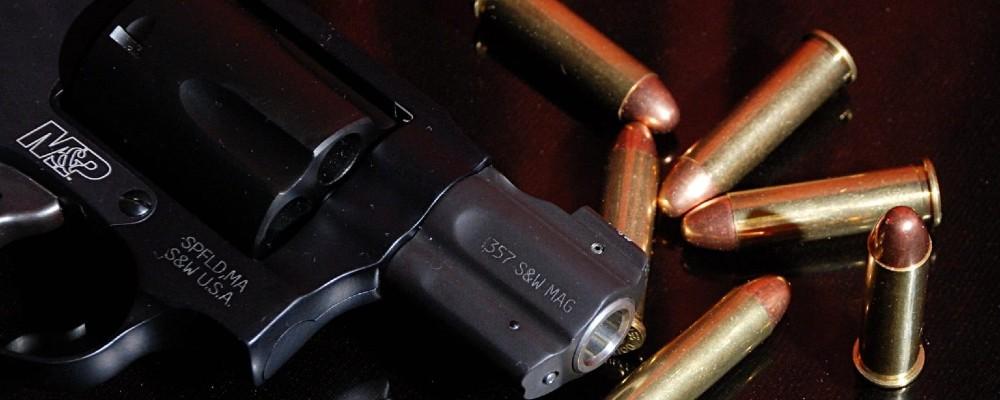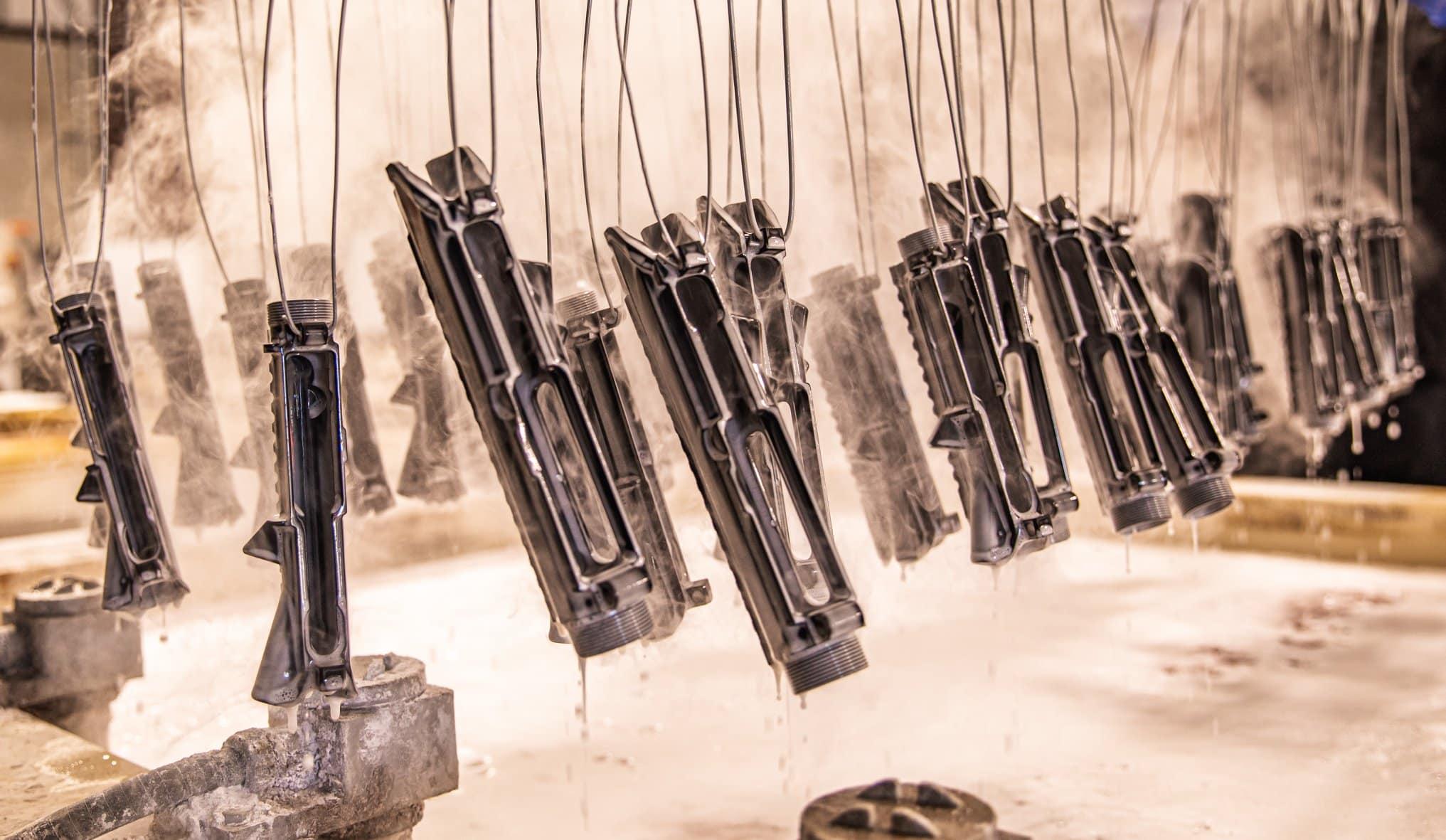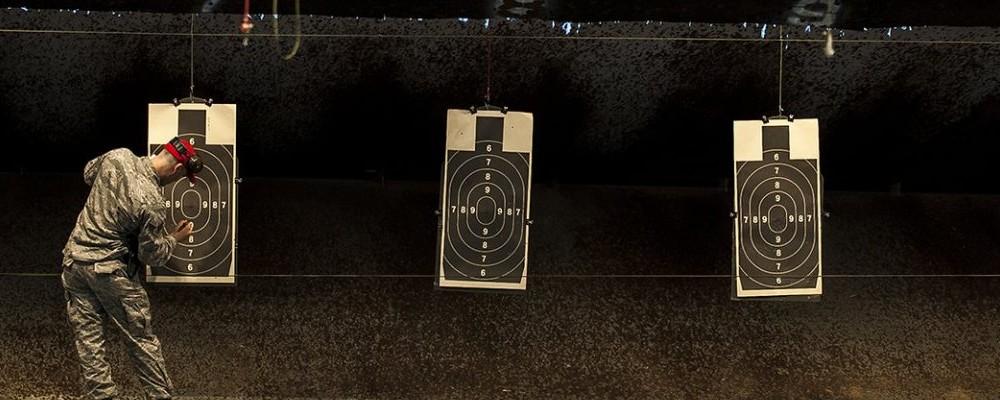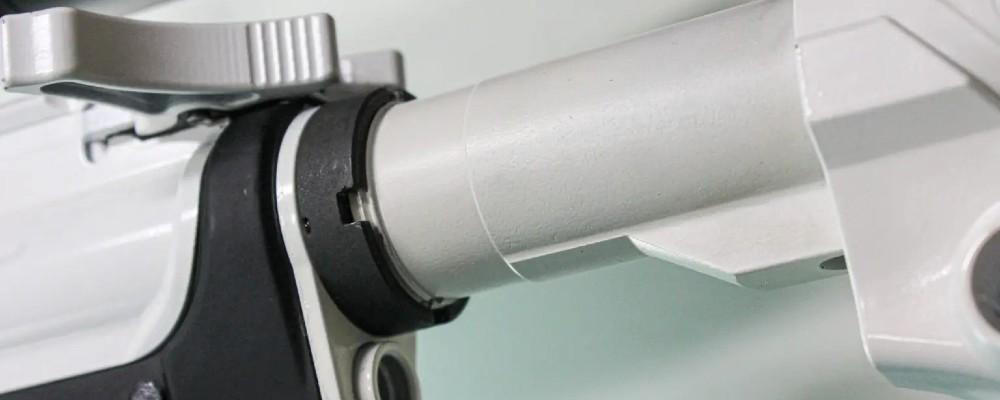The Best AR-15s: From Beginner To Baller
America's rifle is a universe of performance potential, but navigating the Black Rifle World takes a little preparation to find your perfect AR. We break it all down.
Written By
Kenzie Fitzpatrick
Competitive Shooter
Edited By
Michael Crites
Licensed Concealed Carry Holder
Share:
Products are selected by our editors. We may earn a commission on purchases from a link. How we select gear.

Updated
Oct 2025
After testing over 30 AR-15 rifles across thousands of rounds and consulting with military vets, competitive shooters, and gunsmiths, we’ve created this comprehensive guide to help you understand, select, and master America’s most popular rifle platform.
The Palmetto State Armory PA-15 emerges as our top pick for most shooters, offering an outstanding mix of reliability, accuracy, and value based on our extensive testing. However, your ideal AR-15 will depend on your specific needs, budget, and intended use.
In This Article
Getting Started: Why the AR-15 Today?
Battle-Proven Modularity
By its nature, the AR-15 is lightweight and modular.
The military has fielded various models of the platform over the years in both shortened “Commando” varieties as well as heavy-barreled rifles geared for precision marksmanship at longer ranges.
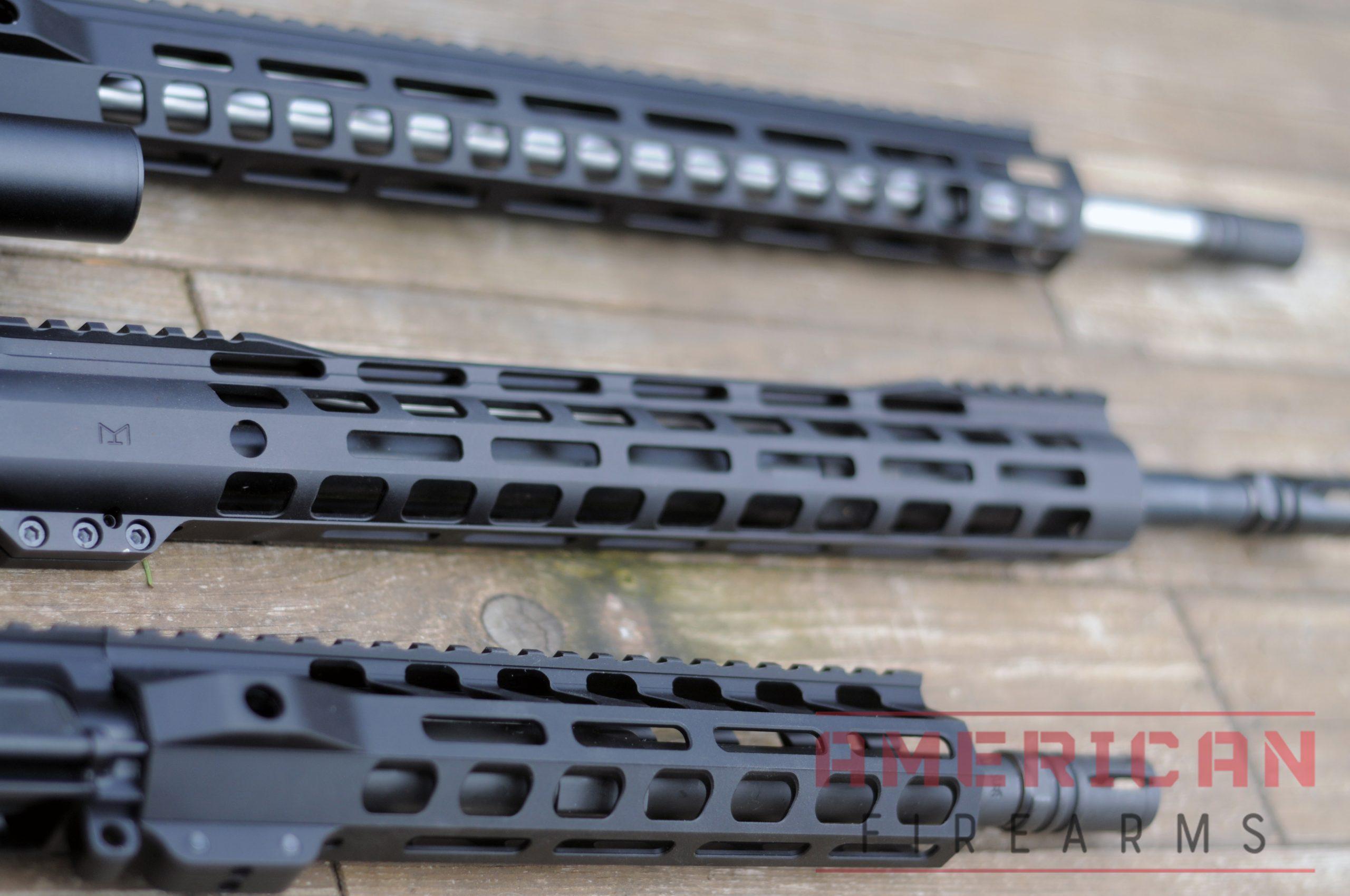
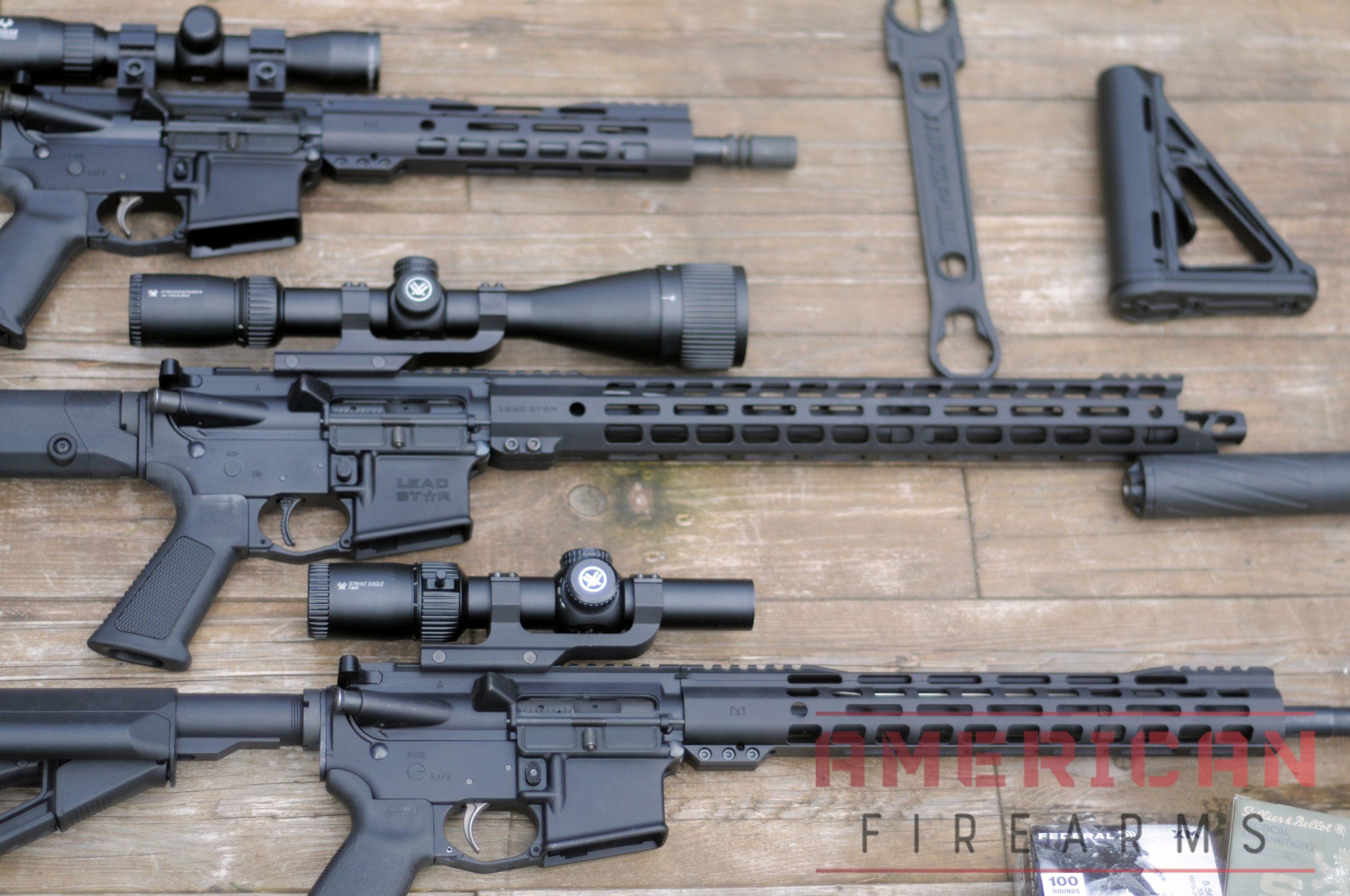
This has had the side benefit of allowing owners whose guns are “banned” under state gun laws to modify their AR to a compliant or “featureless” format that is still legal with little more than some research into basic AR-15 reviews or what AR-15 buying entails.
Massive Aftermarket
With the slate of aftermarket support, you can take your AR in whatever direction you want when it comes to colors, and accessories. and overall configuration.
Today it is estimated that more than 18 million such modern sporting rifles are in circulation among America’s gun owners, a figure that is perhaps underestimated but nonetheless points to how popular the AR platform has become.
This tremendous market means there are many fantastic manufacturers creating niche products designed for every need – everything from small brands knocking out updated mag releases to Magpul’s military-embraced furniture, there’s a product out there for every need.
Added to this are AR-15 and AR-9 style pistols, which are all just branches of the family that are increasingly in demand and generating new product innovations on the daily.
More than 5 Forges
A popular trope among the AR-15 community, as the market has exploded in the past 15 years and now includes dozens of top AR-15 companies along with scores of smaller ones, is that deep down inside, all the rifles have the same heart.
There is no “best budget AR-15” out there – even the top-tier ARs are all cut from the same aluminum cloth, so to speak.
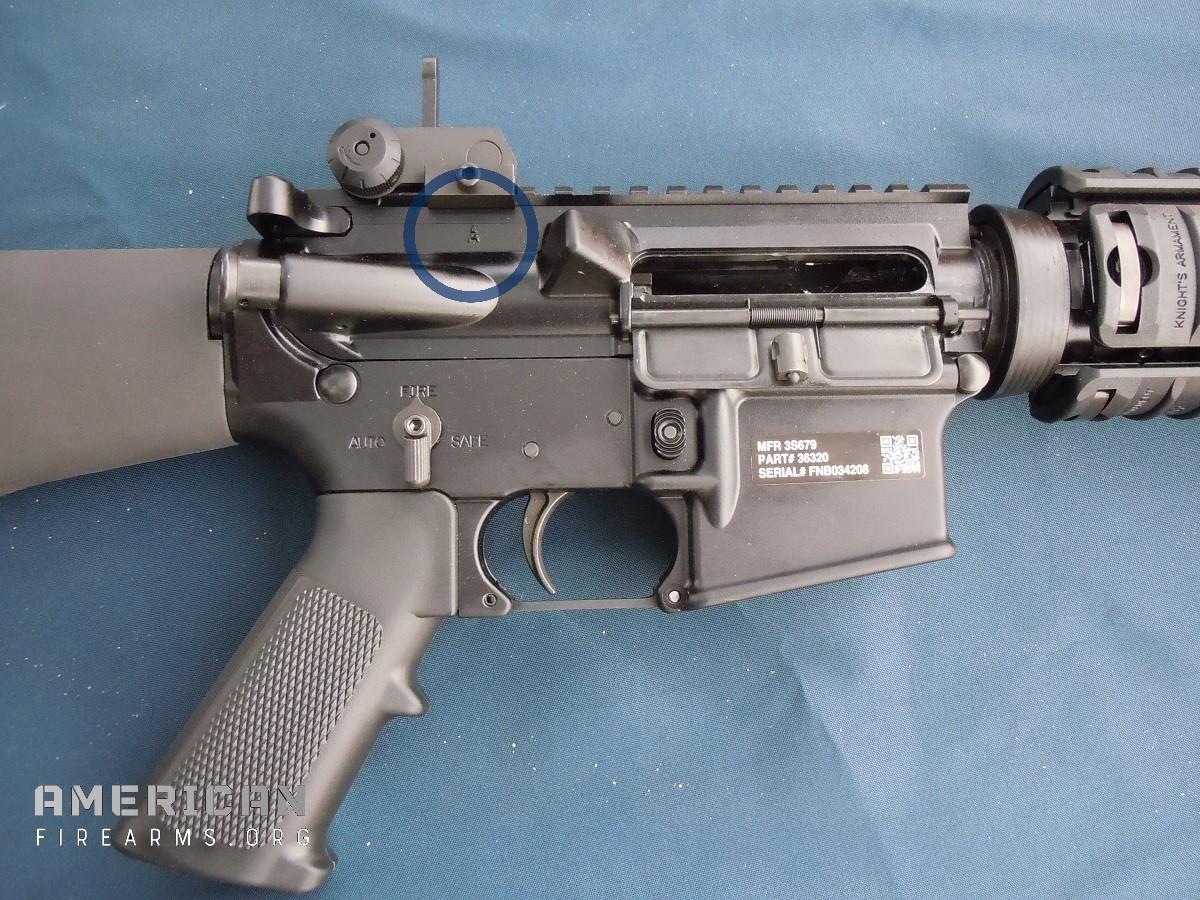
This is because most manufacturers take pre-made aluminum forgings and, after milling them out to finished upper and lower receivers, add barrels, internal parts, and furniture to produce finished AR-15s.
The saying is that “all the AR receiver blanks come from just five forges,” setting up a strawman argument that all AR-15 upper and lower receivers are fundamentally the same when it boils down to it.
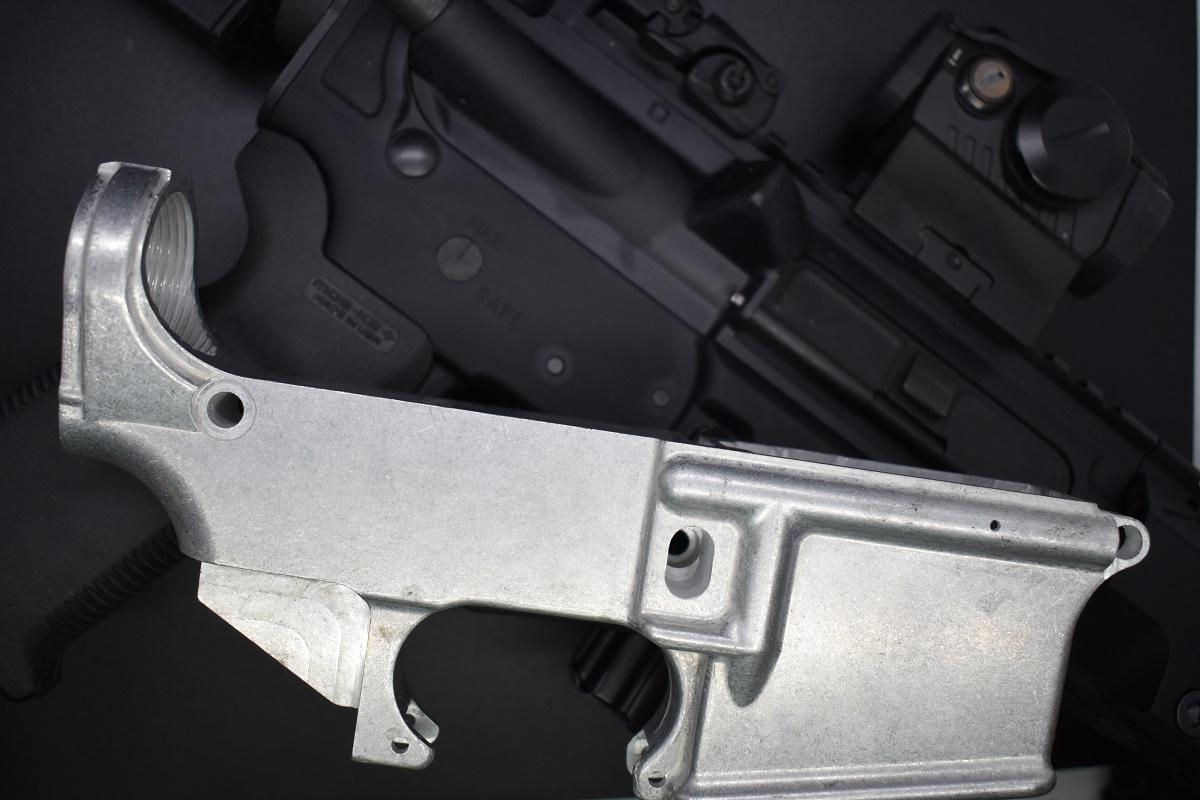
Brands & Manufacturers Add Value

The AR-10 Foundation
Stoner initially developed the AR-10 in 7.62 NATO for military trials in 1956. While the Army ultimately selected the more conventional M14, Stoner’s direct impingement gas system and lightweight aluminum receiver design laid the groundwork for what would become America’s most popular rifle platform.
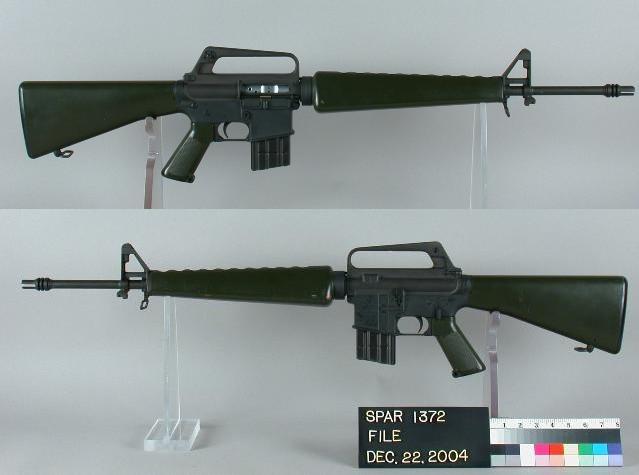
Birth of the AR-15
ArmaLite scaled down Stoner’s design to accommodate the smaller 5.56x45mm cartridge, creating the AR-15 in 1958. The “AR” designation stands for “ArmaLite Rifle,” not “assault rifle” as commonly misunderstood. When ArmaLite sold the rights to Colt in 1959, the platform’s military future was secured.
Military Adoption and Evolution
The U.S. Air Force first adopted the AR-15 in 1961, followed by the Army and Marines who designated it the M16 in 1963. The platform proved its worth in Vietnam, despite early teething problems that were quickly resolved through improved ammunition and maintenance protocols.
The military continued refining the design, introducing the shorter M4 carbine in the 1990s with its 14.5-inch barrel and collapsible stock. These improvements influenced civilian AR-15 development, leading to the modern sporting rifles we see today.
Civilian Market Success
Colt introduced the first civilian AR-15 Sporter in 1966 for $194 (about $1,500 in today’s dollars). The platform’s modular design and proven reliability gradually won over American shooters. Today, with over 18 million AR-15 style rifles in civilian hands, it’s earned the title “America’s Rifle” through its versatility in hunting, competition, and personal defense applications.
The AR-15’s enduring success stems from Stoner’s original vision: a lightweight, reliable, and infinitely customizable platform that can be adapted for virtually any shooting discipline. This modularity, combined with decades of military service and continuous improvement, has made the AR-15 the foundation of modern sporting rifle design.
Using This Guide
This guide is organized into distinct sections to help you find exactly what you need:
- Best AR-15s of 2024: Our detailed reviews and recommendations based on hands-on testing
- Buyer’s Guide: Essential knowledge for making an informed purchase
- Types of ARs: In-depth exploration of AR-15 components and functionality
- Pre-Purchase Questions: Critical questions to ask before making your purchase
This article is part of our Guide to Everything AR.
There’s an ideal AR out there for everyone, and below is my list of the best AR-15 rifles, which takes into account quality, reliability, ergonomics, and our real-world experience.
Essential Pre-Purchase Questions
When shopping for an AR-15, consider asking these often-overlooked questions to make a more informed decision:
Reliability and Performance
- What is the rifle’s expected lifespan with regular use and proper maintenance?
- How does this rifle perform with steel-cased ammunition?
- What is the rifle’s typical grouping size at 100 yards with factory ammunition?
Maintenance and Longevity
- What is the recommended break-in procedure for this particular rifle
- Are there any specific cleaning or maintenance requirements unique to this model?
- Are there any specific break-in or maintenance procedures recommended for the barrel
Customization and Upgrades
- How easy is it to find replacement parts for this rifle?
- Are there any restrictions on modifying this rifle that could void the warranty?
- How easy is it to upgrade or customize this rifle with aftermarket parts?
Warranty and Support
- What is the manufacturer’s warranty policy, and how responsive is their customer service?
- Are there any known issues or recalls for this specific model?
Practical Considerations
- What is the availability and cost of magazines compatible with this rifle?
- How does the recoil impulse compare to other AR-15s in its class?
- How well does the finish hold up to heavy use and adverse conditions?
Value and Long-Term Ownership
- How well does the rifle retain its value compared to other AR-15s in its price range?
- Are there any training courses or resources specifically recommended for new owners of this rifle model?
Understanding AR-15 Components
While the AR-15’s modularity is part of its appeal, understanding key components helps you make informed decisions about your first rifle and future upgrades.
Quickly: What is mil-spec?
Mil-Spec (Military Specification) refers to parts manufactured to U.S. military dimensional and material standards. In AR-15s, mil-spec components ensure parts compatibility and meet baseline durability requirements established by military contracts.
What it means practically:
- Mil-spec triggers typically break at 5.5-8.5 pounds
- Mil-spec buffer tubes have specific diameter/threading (different from “commercial spec”)
- Mil-spec BCGs meet magnetic particle inspection (MPI) and high-pressure testing (HPT) standards
- Mil-spec receivers follow specific dimensional tolerances
What it doesn’t mean: Mil-spec isn’t always “better”—it’s a minimum standard ensuring reliability and parts interchangeability. Many aftermarket “non-mil-spec” components exceed military specifications in quality or performance but may sacrifice universal compatibility for enhanced features.
When it matters most: Buffer tubes, lower parts kits, and BCGs benefit from mil-spec compliance to ensure parts from different manufacturers work together seamlessly.
Upper and Lower Receivers: The Foundation
The AR-15 splits into two main assemblies connected by takedown pins. Only the lower receiver is legally considered the firearm and requires an FFL transfer. This modular design means you can own multiple uppers in different calibers or configurations while using the same serialized lower.

Receiver Materials Matter:
- 7075-T6 Aluminum: Military specification with superior strength, used in premium rifles
- 6061-T6 Aluminum: Slightly softer but more corrosion-resistant, common in budget builds
- Forged vs. Billet: Forged receivers (most common) offer proven strength and mil-spec compatibility. Billet receivers allow custom features but may not accept all standard parts
The upper receiver houses the bolt carrier group (BCG) and barrel, while the lower contains the trigger group and controls. Quality receivers ensure proper fit between components and consistent accuracy over thousands of rounds.
Barrels: Where Accuracy Begins
Your barrel choice significantly impacts accuracy, weight, and intended use. Most AR-15s today feature 16-inch barrels as the minimum legal length for rifles.
Barrel Length and Performance:
- 16-inch: Sweet spot for 5.56 NATO, balancing velocity and maneuverability
- 18-20 inch: Better long-range performance but added weight and length
- 14.5-inch: Requires permanently attached muzzle device to reach legal 16-inch minimum
Barrel Materials and Coatings:
- 4150 Chrome Moly Vanadium (CMV): Military specification steel for durability
- 4140 CMV: Civilian standard, adequate for most applications
- 416R Stainless: Premium choice for precision shooting
- Chrome lining: Extends barrel life but may slightly reduce precision
- Nitride coating: Modern treatment offering corrosion resistance and easier cleaning
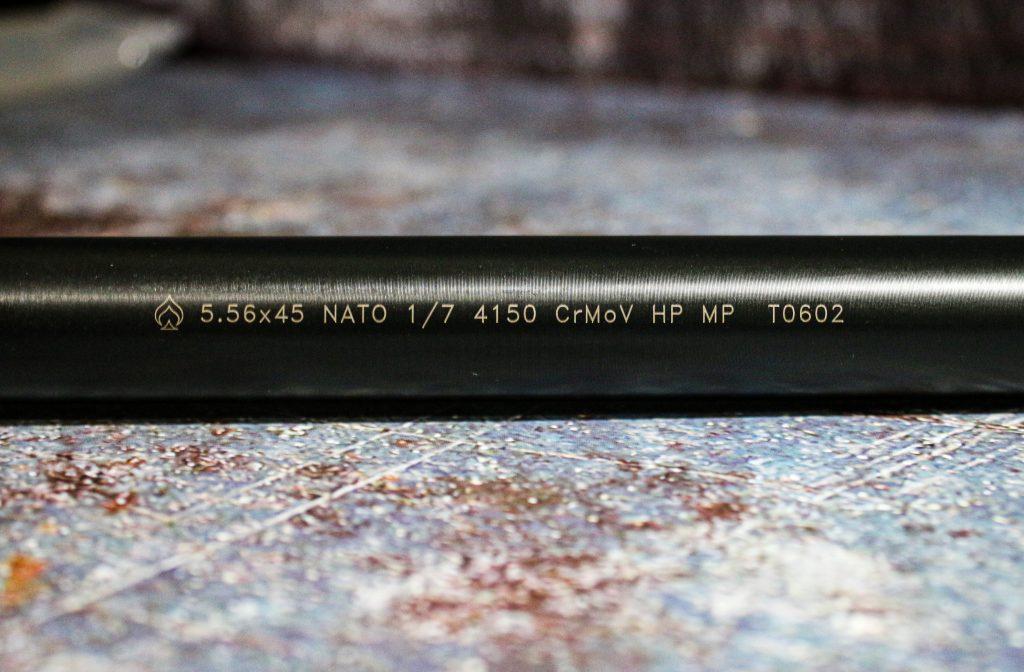
Twist Rate Fundamentals: The rifling twist rate determines bullet weight compatibility. A 1:7 twist (one full rotation every 7 inches) stabilizes heavier 77-grain bullets, while 1:9 works better with lighter 55-grain ammunition. The versatile 1:8 twist handles the full spectrum of common 5.56/.223 ammunition weights.
Cold Hammer Forged vs. Button Rifled: Cold hammer forged barrels, created by hammering the barrel around a mandrel, offer superior durability and consistency. This process creates a denser grain structure that extends barrel life, particularly important for high-volume shooters or duty applications.
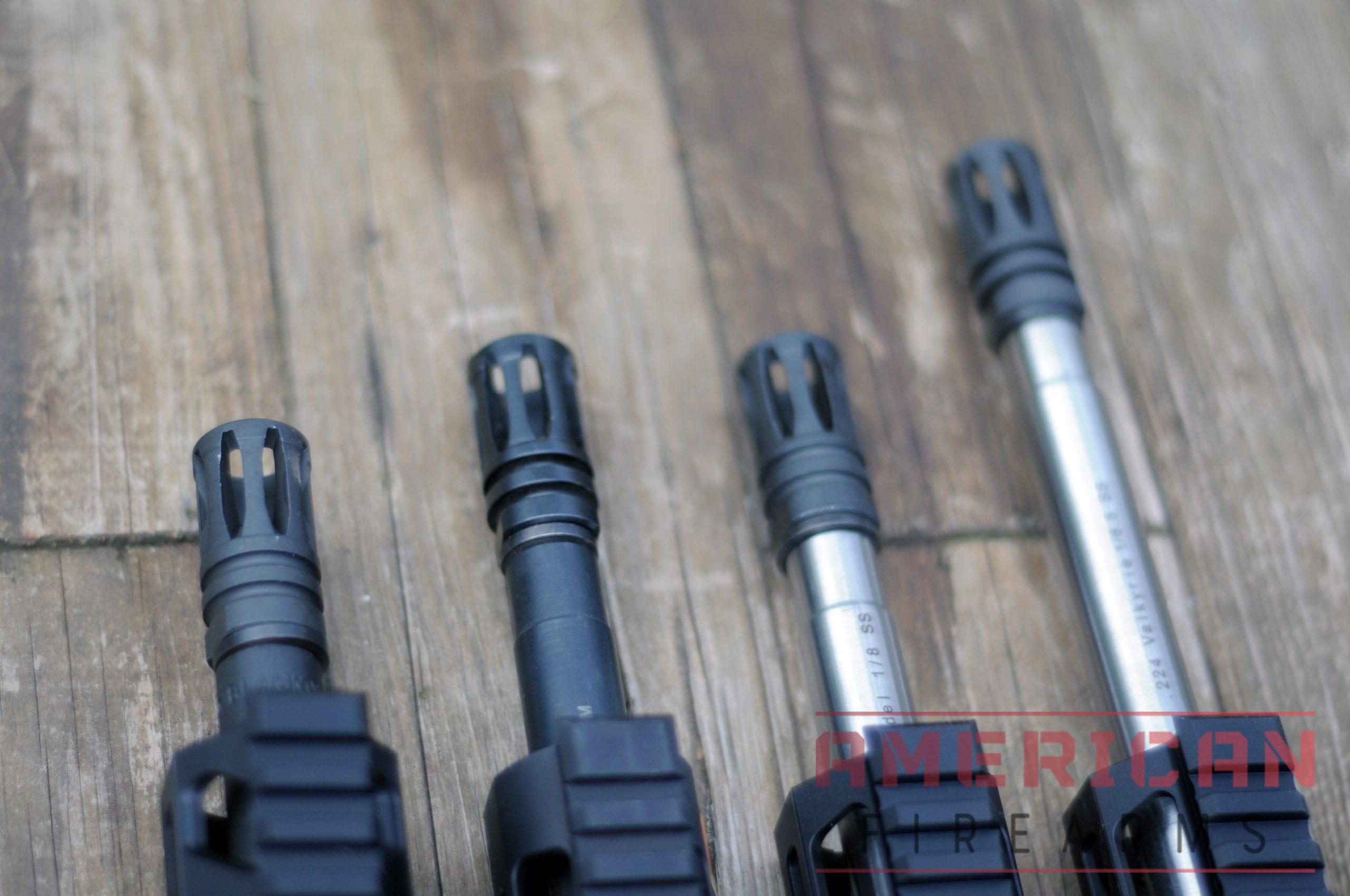
Gas Systems: Controlling the Cycle
The gas system powers your AR-15’s semi-automatic operation by redirecting propellant gas to cycle the bolt carrier group.
Gas System Lengths:
- Carbine-length: 7.4 inches, standard on 14.5-16 inch barrels, can be overgassed
- Mid-length: 9.5 inches, optimal for 16-inch barrels, softer recoil impulse
- Rifle-length: 12.5 inches, used on 18+ inch barrels, smoothest operation
Mid-length gas systems have become the gold standard for 16-inch barrels because they provide gentler extraction and reduced wear compared to carbine-length systems. The longer dwell time allows gas pressure to drop before cycling the action.
Gas Blocks and Adjustment: Most AR-15s use fixed gas blocks sized for reliable cycling with various ammunition types. Adjustable gas blocks allow fine-tuning for specific loads or when adding suppressors, which increase back-pressure and can cause over-gassing.

Bolt Carrier Groups: The Engine
The BCG contains the bolt, bolt carrier, firing pin, cam pin, and extractor that make semi-automatic operation possible. When you pull the trigger, the firing pin strikes the primer, propellant burns, and gas pressure drives the BCG rearward to extract the spent case and chamber a fresh round.
Full-Auto vs. Semi-Auto BCGs: Full-auto BCGs are heavier and include additional material that protects the firing pin. Despite the name, they don’t enable automatic fire but do provide more reliable cycling in over-gassed systems and add mass that can smooth the recoil impulse.
BCG Materials and Coatings:
- Carpenter 158 steel bolts: Premium choice for high-stress applications
- 9310 steel bolts: High-quality alternative to Carpenter 158
- 8620 steel bolts: Mil-spec minimum, adequate for most uses
- Nickel boron coating: Reduces friction and simplifies cleaning
- Chrome BCGs: Traditional coating for corrosion resistance
Quality BCGs receive magnetic particle inspection (MPI) and high-pressure testing (HPT) to ensure they meet stress requirements.
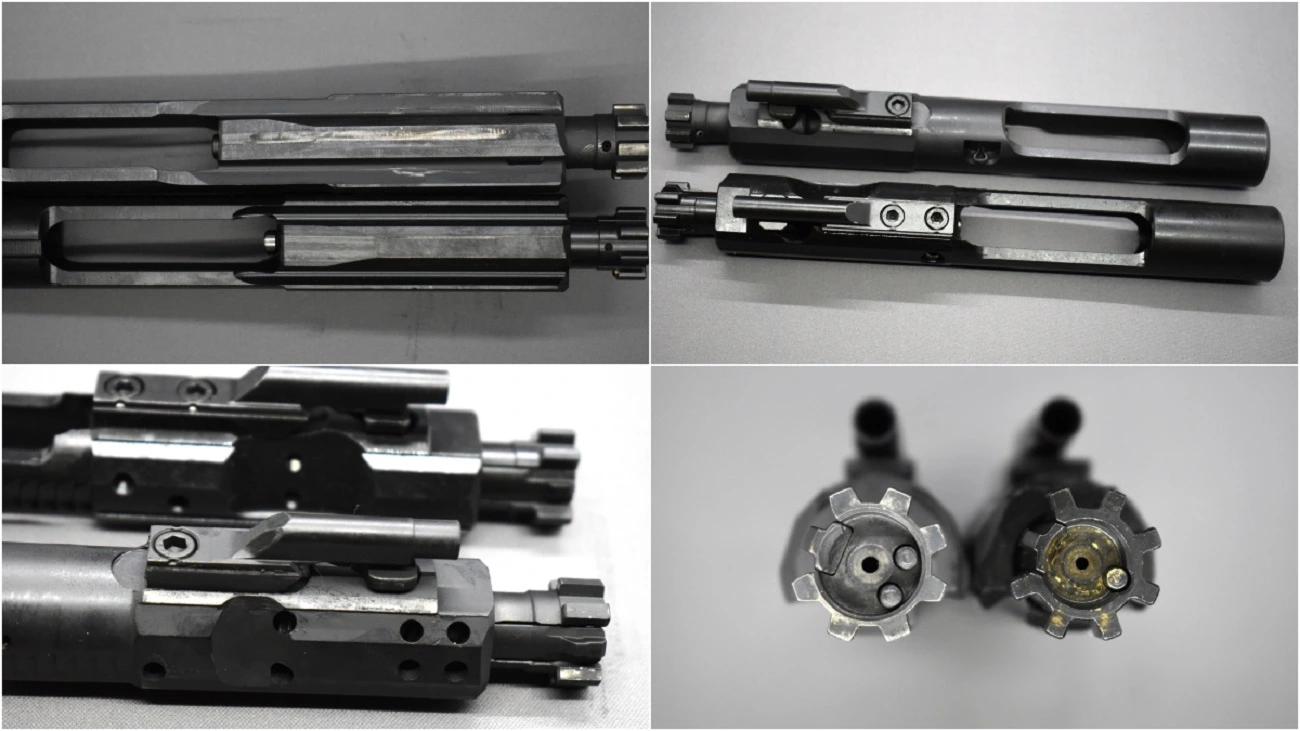
Triggers: Control and Precision
Most entry-level AR-15s include mil-spec triggers with 5.5-8.5 pound pull weights and noticeable creep. While functional, upgrading the trigger often provides the most noticeable improvement in shooting performance.
Single-Stage vs. Two-Stage:
- Single-stage: Consistent pull weight until clean break, preferred for rapid fire
- Two-stage: Light first stage followed by heavier second stage, favored for precision shooting
Drop-in Trigger Packs: Self-contained units replace the entire fire control group and typically offer cleaner breaks, reduced pull weights, and faster reset. Popular options from companies like CMC, Rise Armament, and Geissele provide noticeable improvements over mil-spec triggers.
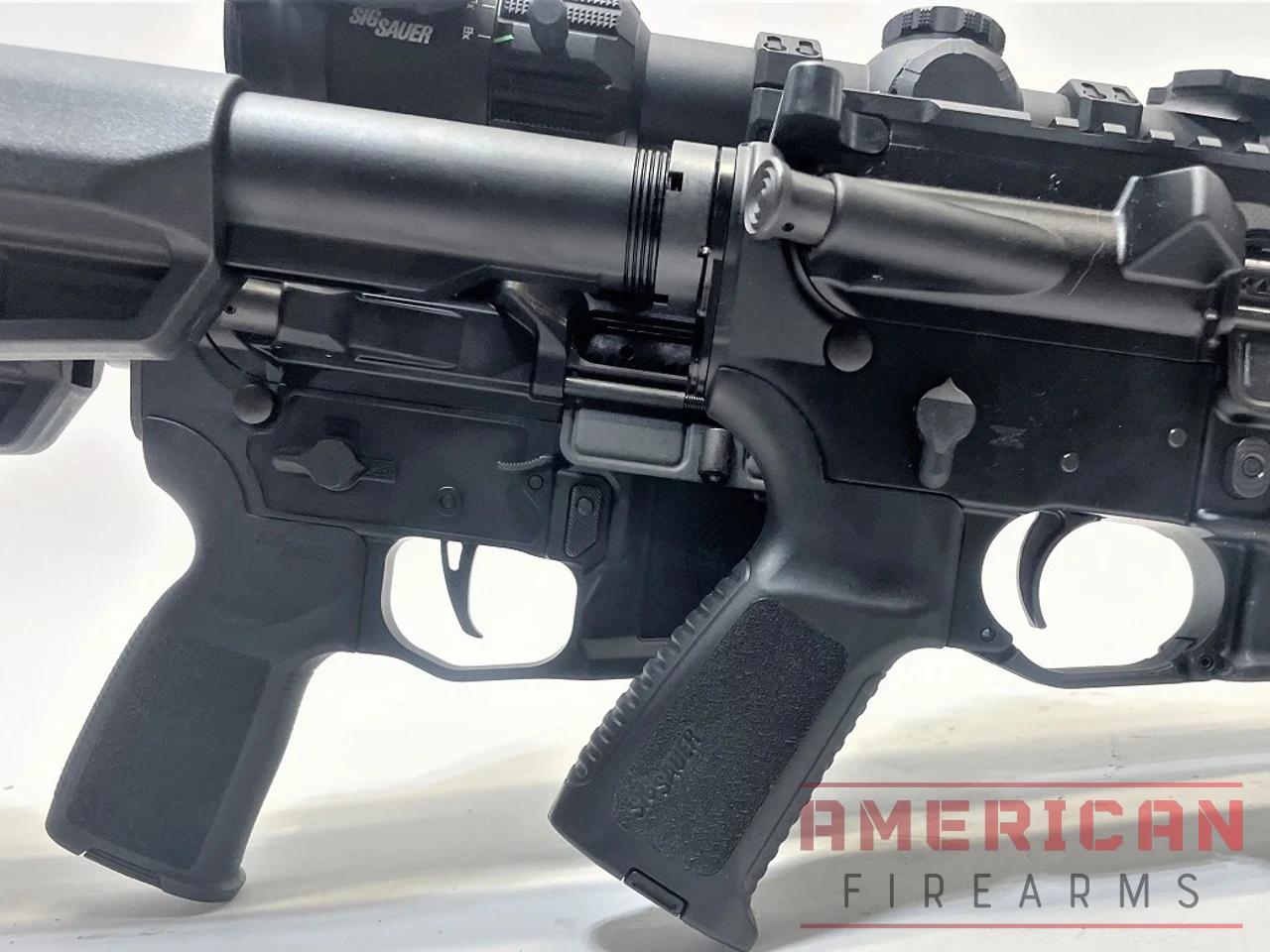
Handguards: Mounting Platform and Protection
Modern AR-15s predominantly use free-floating handguards that attach to the barrel nut rather than touching the barrel. This eliminates accuracy-robbing contact pressure while providing mounting space for accessories.
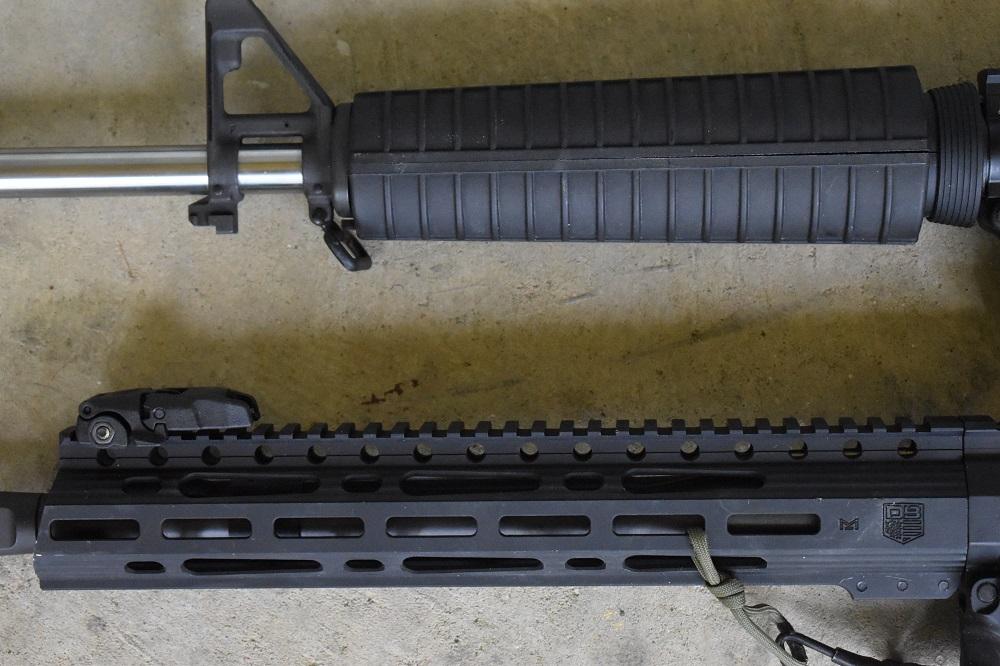
Mounting Systems:
- M-LOK: Current industry standard, lightweight and versatile
- Picatinny/1913 rail: Original system, heavier but universally compatible
- KeyMod: Earlier alternative to M-LOK, largely superseded
Free-floating handguards improve accuracy potential by eliminating barrel contact that can shift point of impact as the barrel heats during firing. They also provide more real estate for mounting lights, grips, and other accessories.
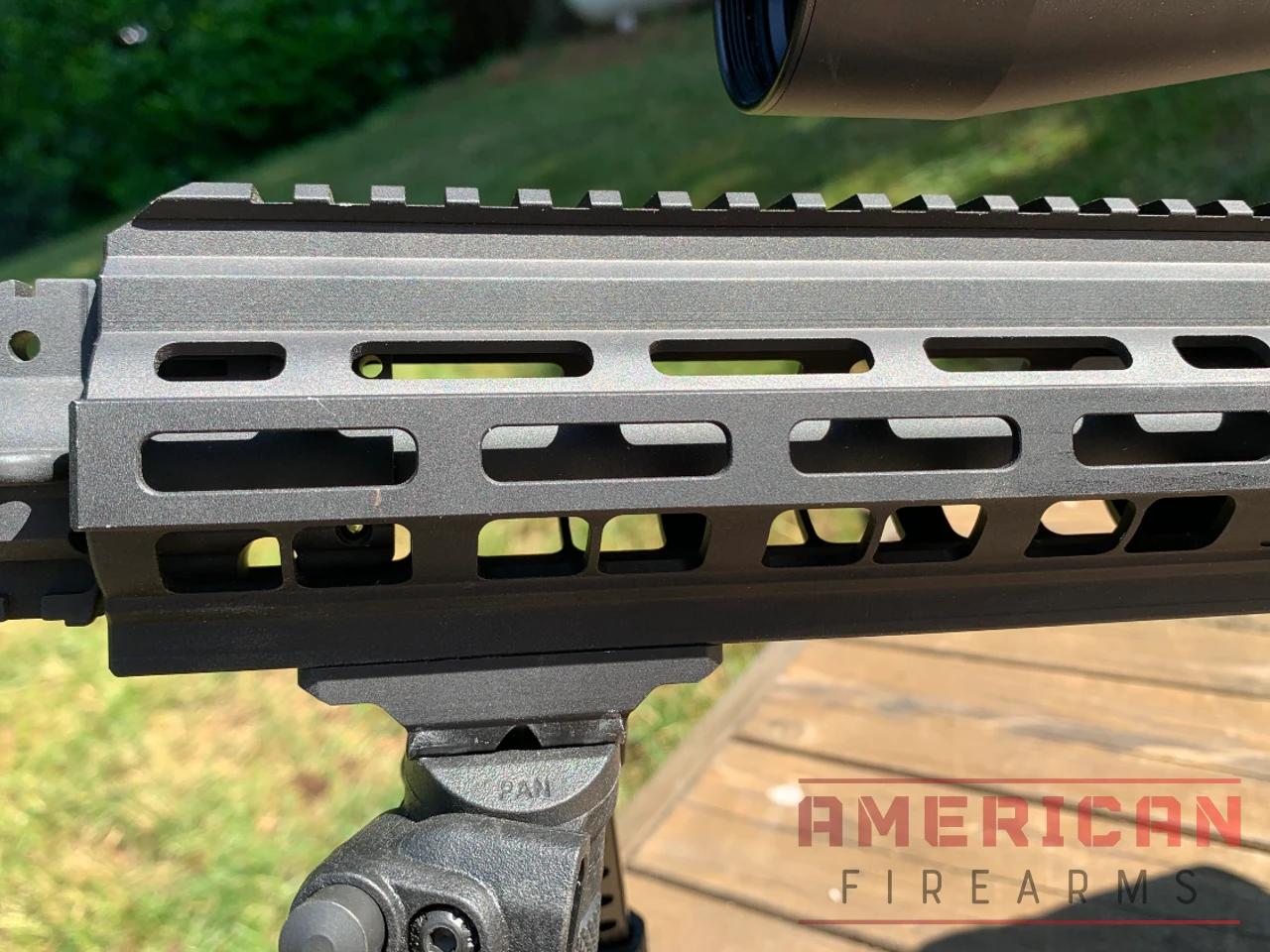
Caliber Options
What if you don’t want a Plain Jane 5.56 AR? While the AR-15 platform is famously associated with the .223 Remington and 5.56x45mm NATO cartridges, its true versatility shines through the wide array of calibers it can accommodate.
Thanks to its modular design, the AR-15 can be adapted to suit diverse shooting needs, from competitive target shooting and varmint control to hunting medium-sized game and self-defense. We highlighted the various caliber options offered by leading AR manufacturers below, so if you want to build a .300 BLK shorty or use 6mm ARC to reach out and touch something, you’ll know which brand can give you those options.
| Brand Name | Calibers Offered for ARs |
|---|---|
Aero Precision | 5.56 NATO .223 Wylde .224 Valkyrie .300 Blackout 6.5 Grendel .350 Legend 9mm .40 S&W |
Bravo Company Manufacturing (BCM) | 5.56 NATO & .300 Blackout |
Colt | .223 Remington & 5.56x45mm NATO |
Daniel Defense | 5.56mm NATO 6.8mm SPC & .300 BLK |
Geissele Automatics | 5.56x45mm NATO 6mm ARC & 6.5 Creedmoor |
LaRue Tactical | 5.56mm & 7.62x51mm NATO |
Noveske | 5.56 NATO .300 AAC Blackout 9mm Luger 6.5 Grendel & .223 Remington |
Palmetto State Armory (PSA) | 5.56 NATO .223 Remington .300 AAC Blackout 6.5 Grendel 7.62x39 .22lr .45 ACP 9mm .350 Legend .450 Bushmaster .458 SOCOM .50 Beowulf & .224 Valkyrie |
Springfield Armory | 5.56 .308 WIN & 9mm |
SIG Sauer | 5.56mm NATO .223 Wylde 7.62mm NATO 7.62x39mm & 9mm Luger |
Smith & Wesson | 5.56x45mm/.223 Remington .22 Long Rifle 5.45x39mm (older models) |
AR Reviews & Recommendations
How We Tested
Build Quality
We assess the quality of the materials used in the rifle’s construction, including the receiver, barrel, and other key components, as well as how well the rifle is put together.
Accuracy
We bench-fire test rifles using various types of ammunition at different distances to evaluate accuracy and precision.
Ergonomics
We evaluate the overall design and ergonomics of the rifle, including weight distribution & balance.
Overall Value
We evaluate the rifle’s price relative to other rifles in its class and assess whether it offers good value for money.
More on our testing process
Comparison Table
Our Top Picks
Displaying 1 - 1 of 10
Awards
Price
Overall Rating
Description
Rating Categories
Accuracy
Ergonomics
Features
Fit & Finish
Reliability
Value

$650.99 at Palmetto State
Jump to Details49
All-in-all PSA continues to use its massive component infrastructure to deliver fun, high-quality products, and their PA-15 is no different.
8/10
7/10
6/10
9/10
9/10
10/10

$2024 at Daniel Defense
Jump to Details44
It’s hard to get too much of a good thing with Daniel Defense. They rarely disappoint, and the Daniel Defense DDM4 V7 holds that line impressively.
8/10
7/10
7/10
8/10
8/10
6/10

$919.32 at Palmetto State
Jump to Details44
Few AR-15s have impressed me in the pure “bang for the buck” category as the Lead Star Grunt. They've really packed a lot to like in a sub-$1,000 rifle.
7/10
8/10
8/10
7/10
7/10
7/10
$1116.99 at Palmetto State
Jump to Details39
The Saint Victory builds on SA’s impressive SAINT semi automatic rifle with serious attention to detail, a full-length 15″ M-Lok riddled handguard and a nickel boron-coated flat-faced trigger right out of the box.
7/10
6/10
6/10
6/10
7/10
7/10

$880.99 at Palmetto State
Jump to Details41
The Ruger SFAR, or "Small Frame Autoloading Rifle", in .308 that is nearly the same size as a traditional 5.56 caliber AR-15.
7/10
6/10
6/10
8/10
7/10
7/10

$930.99 at Palmetto State
Jump to Details34
A new, high-quality AR-15 designed for competition shooting with top-notch parts.
8/10
5/10
6/10
6/10
5/10
4/10

$549.99 at Palmetto State
Jump to Details45
The AM-15 is a fantastic budget AR with a 16-inch 4150 Chrome Molybdenum Vanadium Steel barrel that ends in an A2-style birdcage.
8/10
7/10
6/10
6/10
9/10
9/10

$999.99 at Palmetto State
Jump to Details48
The Aero M4E1 is chambered in .223 Wylde, which gives you the option of running 5.56 NATO or .223 Rem flawlessly.
8/10
8/10
8/10
8/10
9/10
7/10
$927.99 at Palmetto State
Jump to Details41
Diamondback’s DB15 has been totally redesigned, and if you simply add up the price of the components they incorporated into the new gun it’s easy to see how much value they packed into their new AR.
7/10
7/10
7/10
7/10
7/10
6/10
$1023.99 at Palmetto State
Jump to Details53
The M400 SDI XSeries gives you competition performance in a common tactical design.
9/10
9/10
8/10
9/10
9/10
9/10
| Name | Selection | Price |
|---|---|---|
PSA PA-15 | Best Value | $599 |
Daniel Defense DDM4 | Best Premium AR | $2,024 |
Lead Star Grunt | Best Mid-Range Package | $919 |
FN M4 Carbine | Best M4 Build | $1,749 |
Springfield Saint Victor | Also Great | $1,116 |
COLT LAW ENFORCEMENT Carbine | Also Great | $1,049 |
Ruger SFAR | .308 Pick | $880.99 |
S&W M&P 15 Volunteer XV Pro | Mid-Range Runner-Up | $930 |
Anderson AM-15 | Budget Pick | $589 |
Aero Precision M4E1 | .223 Wylde Pick | $999 |
Diamondback DB15 | Also Great | $1,342 |
BCM RECCE-16 MCMR | RECCE Rifle Pick | $1,443 |
The Best AR-15s
1. Editor’s Pick: Palmetto State Armory PA-15
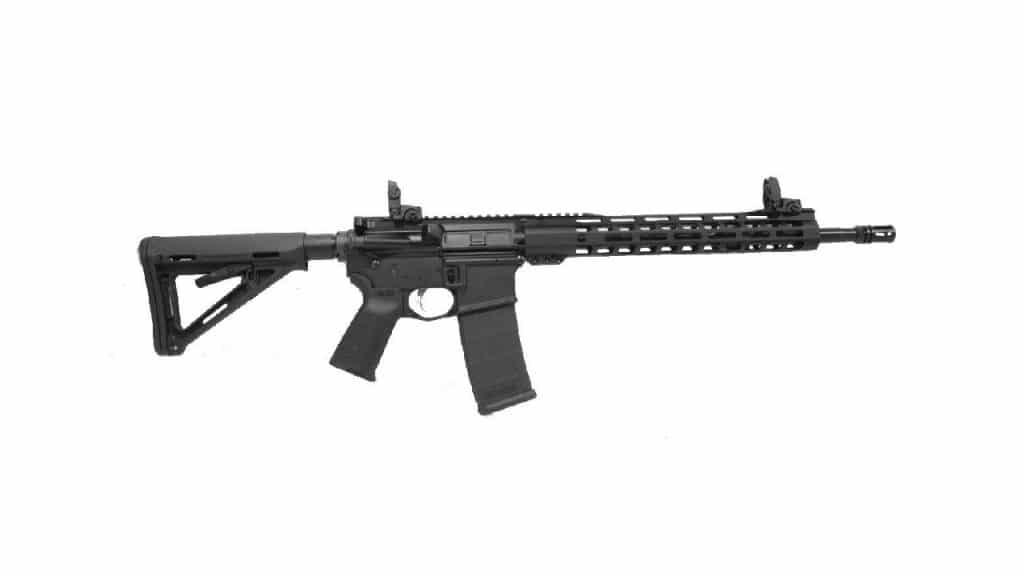
$650.99

49
EXCEPTIONAL
2026 Awards & Rankings
Performance Scores
Action: Semi-automatic
Barrel: 16 inches
Caliber: 5.56×45mm NATO
Gas System: Direct impingement
Grip: Magpul MOE
Trigger: Palmetto State Armory Mil-Spec
Sights: Magpul MBUS Sight Set
Weight: 6.5 pounds
What we liked:
- Solid availability
- Serious bang for the buck
- Lots of PSA products to choose from
- 1:7 barrel twist rate is good middle ground
What we didn’t:
- There are higher-quality builds available
- Not a drastic improvement over previous-gen PSA ARs
- Controls can run a touch loose
A quality (and customizable) workhorse AR
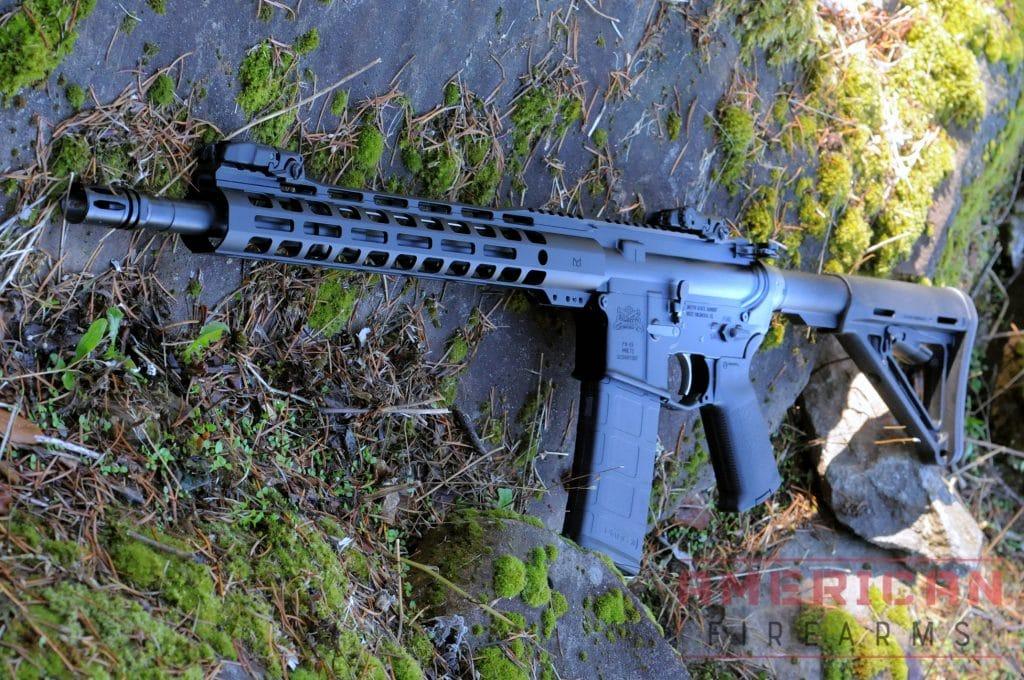
Long an AR component producer, Palmetto State has made an impact as an AR-15 manufacturer. Palmetto State’s PA-15 mil-spec AR-15 uses standard components but I love how they pair a 4150 Chromoly 16-inch, cold hammer-forged barrel with a classic A2 pistol grip, carbine-length gas system, and melonite finish for some throw-back goodness.
Beyond the components, PSA owns the production behind these ARs, so I can generally always find a few in stock in various configurations, which can be a rarity given the kind of surge in demand for ARs (and firearms in general) in times of crisis.

Flaws worth noting
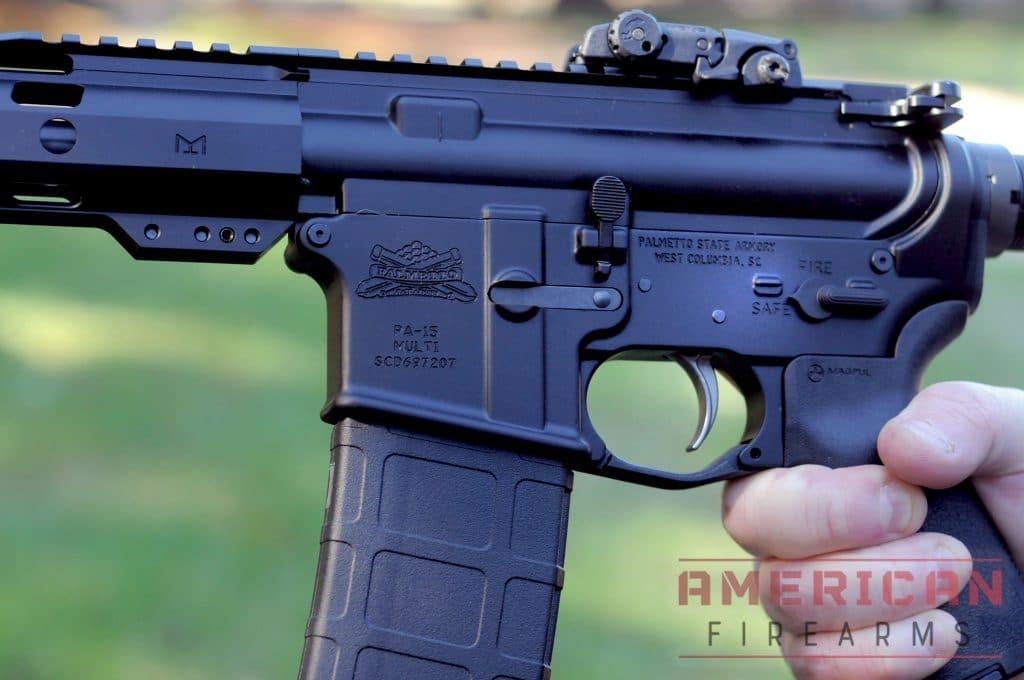
My main issue with the PSA is its carbine-length gas system paired with the 16-inch barrel which tends to over-gas the gun. I wouldn’t say it’s a major flaw, but an adjustable gas block will help dial the rifle to your liking if you find it too snappy.
Sure, you’ll be able to power through the cheapest ammo available (and given recent trends *cheap* is probably the wrong word), but I found it produced a forward (2 or 3 o’clock) ejection pattern out of the box.
Not a killer, but something that we’d like to tune out to get it humming like a Singer.
I’ve also had a PSA BCG freeze up on me without proper maintenance. Not unique to the PSA rifle, but one of the few instances when that has happened to me.
A fun, functional middle ground
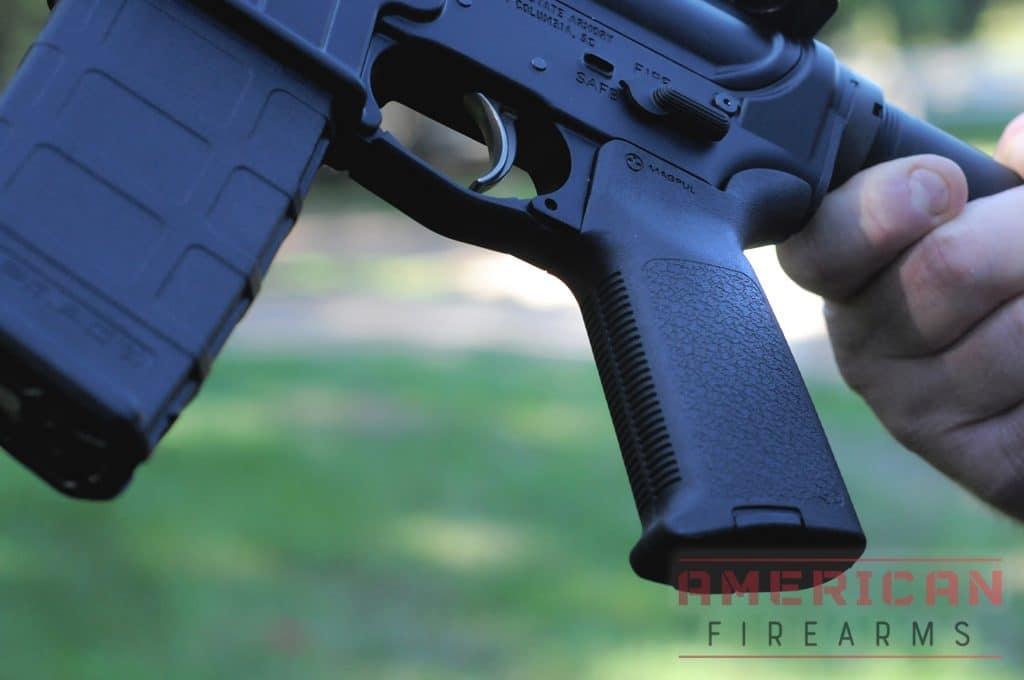
The 1:7 twist rate barrel gets 62 & 77-grain ammo to the target in a tight group – but also performs well with 55-grain. Paired with a halfway decent LPVO, I can ring 8-inch steel from a standing position at 75 and 100 yards all day long.
As with all classic A2 birdcages, there are no ports on the bottom so you’ll avoid kicking up dust when firing prone.
All-in-all PSA has produced an outstanding rifle and continues to use its massive component infrastructure to deliver fun, high-quality products. Sure, there are higher quality, better-designed ARs out there, but for a first AR or a 5th, I think the PSA hits the sweet spot of value and performance. For more check out our PA-15 long-termer review.

2. Premium Pick: Daniel Defense DDM4V7 Mil Spec AR-15

$2024

44
EXCEPTIONAL
2026 Awards & Rankings
Performance Scores
What we liked:
- Incredible build quality
- Gold standard for reliability
- Mid-length gas system makes for softer shooting
- California compliant options
What we didn’t:
- Trigger feels heavier than it should
- Vertical grip is mounted in an awkward location from factory and limits hand position options
A top-tier AR if there ever was one
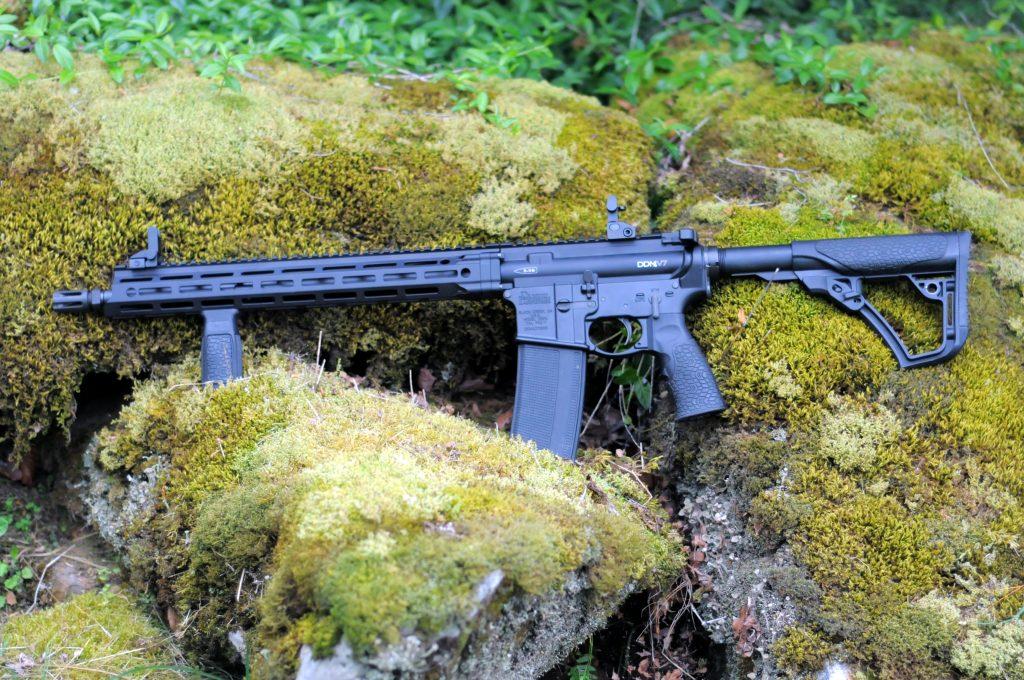
The company that made AR rail systems famous has produced some of the most popular rifles now for a generation. A long-time favorite of mine, the Daniel Defense DDM4, especially the V7 series gun, uses a cold hammer forged government profile barrel that does away with quad Picatinny rails in favor of a lightweight M-LOK rail. The DDM4 also features a flash hider muzzle device, which helps to suppress muzzle flash and improve shooting accuracy.
Long one of our favorite AR-15 manufacturers, I’ve run Daniel Defense guns for years now, and they’ve proven their reliability time and time again.
The folks at Daniel Defense were kind enough to send me one of their DDM4s to spend some quality time with, which you can read more about in our DDM4 V7 review.

Durable Reliability
Daniel Defense is a fan of heavy phosphate coatings and hardened steel gas blocks, which gives their AR-15 rifles a one up on the competition when it comes to durability.
I’ve put a few hundred rounds through this test rifle, and it hasn’t complained once. Beyond reliably chewing though Sellier & Bellot 55 grain M193 like a champ, the DDM4 spits brass at a near-perfect 4 o’clock from the shooter. It’s so consistent I can hear casings landing on one another behind me after a few rounds. It’s just a remarkably well-tuned rifle.


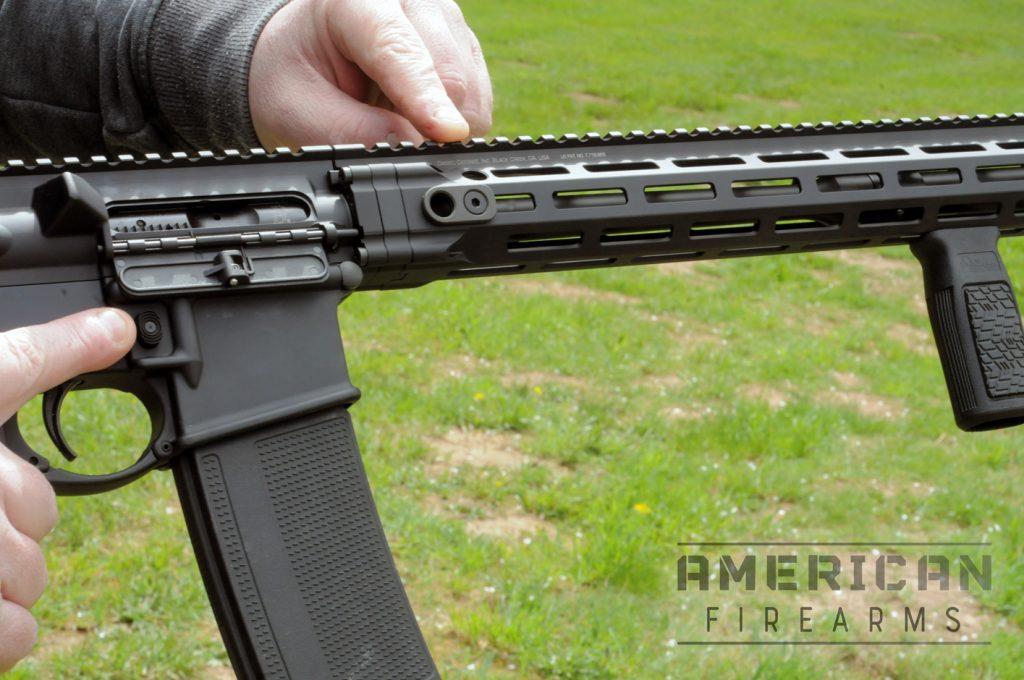
Availability continues to improve
Despite intermittent inventory & availability crunches (in-demand AR-15 manufacturers like Daniel Defense have not been immune to limited inventory), they’re still meeting demand pretty consistently, so if you can’t find the gun of your choice in stock sign up for their newsletter alerts and before long you’ll be at the front of the line.

The DDM4 is the smaller-caliber 5.56 NATO brother to the 7.62/.308 AR-10 DD5. And it’s an outstanding rifle and an example of the kinds of rifles that have made Daniel Defense a household name (of sorts); it feels like a high-end watch and runs, points, and performs as well as anything on the market today.

I find the DDM4’s grip a solid, pointable beast that offers more real estate than the Magpul MOE grip, and it has only recently been supplaneted by the Lead Star’s slimmer, stickier overmolded grip as my favorite.
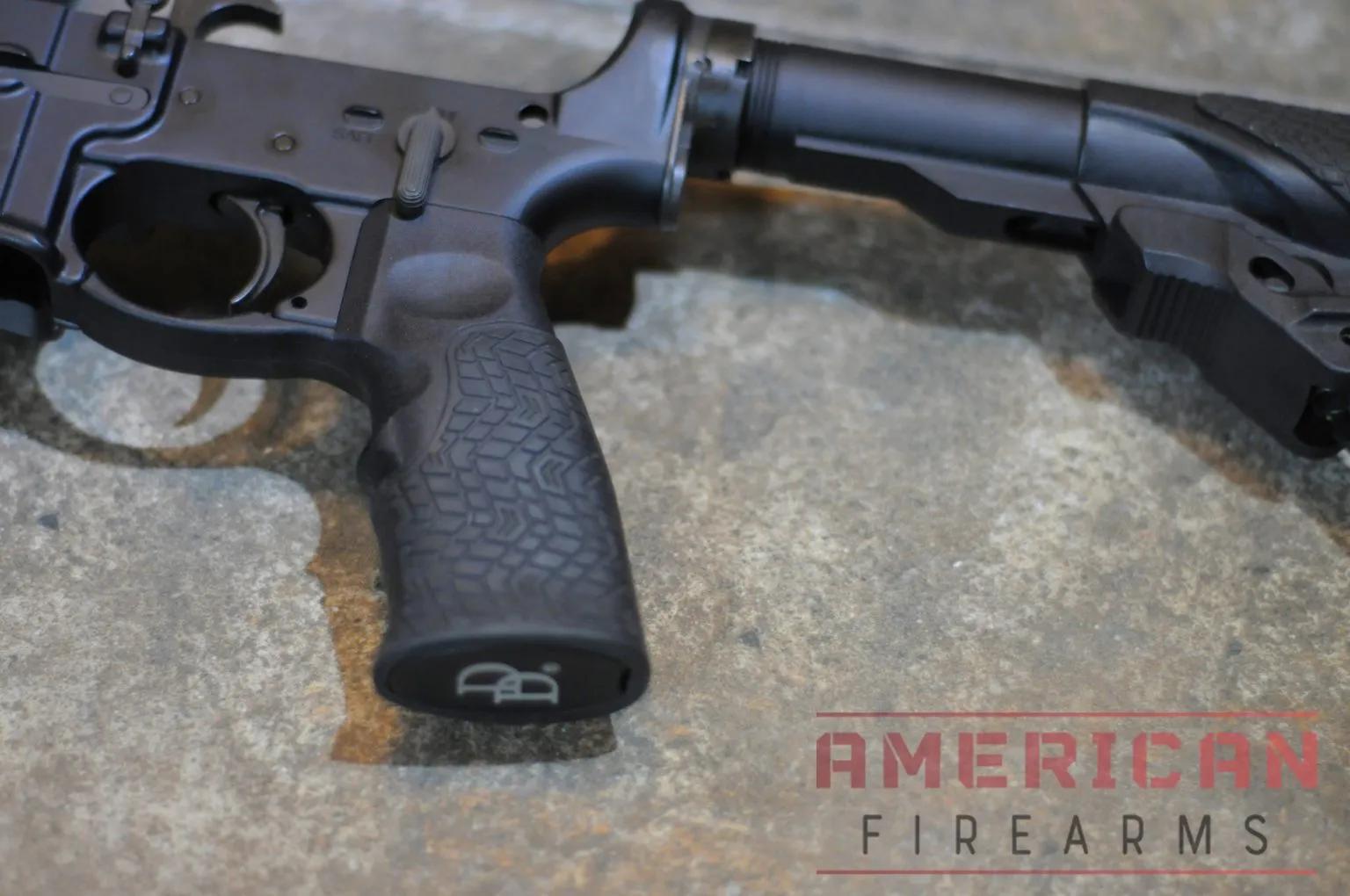
I could go on and on about the DDM4 — it’s a great rifle and absolutely worth considering if you’re in the market for a premium AR. It’s hard to get too much of a good thing with Daniel Defense. They rarely disappoint, and the Daniel Defense DDM4 V7 holds that line impressively.
3. Runner-Up: Lead Star Grunt
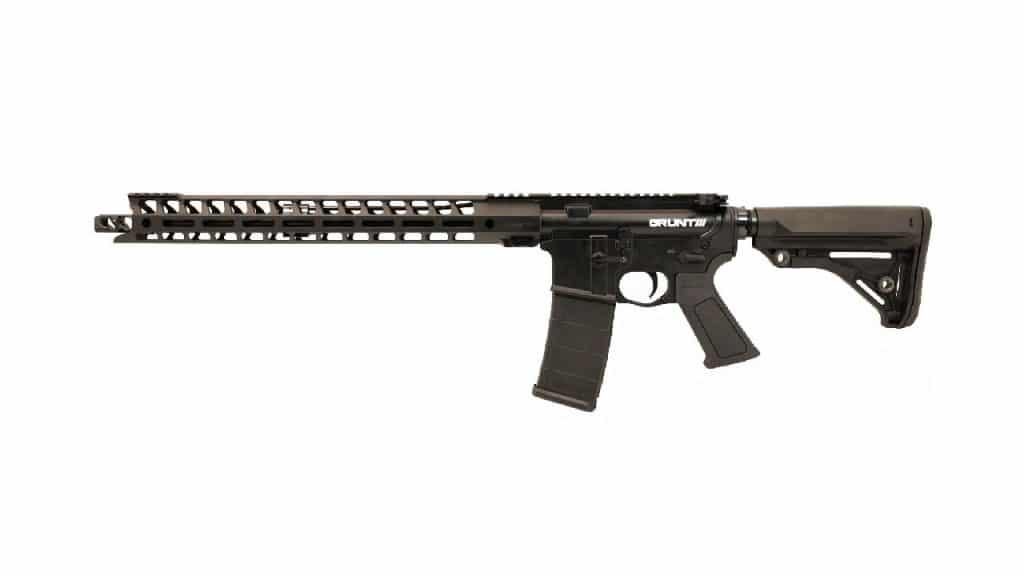
$919.32

44
EXCEPTIONAL
2026 Awards & Rankings
Performance Scores
What we liked:
- Lots of nice upgrade touches
- Light!
- Great trigger
- Quality furniture
What we didn’t:
- Can’t run a suppressor without replacing the handguard
- Muzzle brake is “capital L” Loud
Few AR-15s have impressed me in the pure “bang for the buck” category as the Lead Star Grunt. It’s not attempting to re-write the book or change the game in any sense, but Lead Start has really packed a lot to like in a sub-$1,000 rifle that will go bang every time you pull the trigger.
All the Upgrades
Lead Star may be familiar to the competition set, they’ve been cranking out precision-focused PCCs for some time, and their entry into the world of full-bodied rifles benefits from their precision PCC experience, letting the Grunt stand out amid the sea of 5.56 ARs available within a Benjamin of a grand.

If the Golden Age of 5.56 AR-15 rifles is truly upon us, the Grunt surprised me on a few fronts. The first is just how light and nimble it feels in hand. From the full-length 17-inch handguard to what is now my favorite AR grip (displacing the DD DDM4), everywhere I turned the Grunt over-delivered — especially for what is typcally considered a mid-tier rifle.

The Grunt being Lead Star’s entry into the (hyper-competitive) world of home defense, duty, and range rifles, it’s competing with a lot of options, but there are a few touches that helped the Grunt stand out.
It’s incredibly soft shooting — even with rapid firing — thanks in part to Lead Star’s unique muzzle brake, which leans on their 9mm brake design, using ports on top of the brake in addition to a pre-chamber to help keep muzzle rise to a minimum and extending their innovative approach to controlling a PCC to world of the 5.56 rifles.
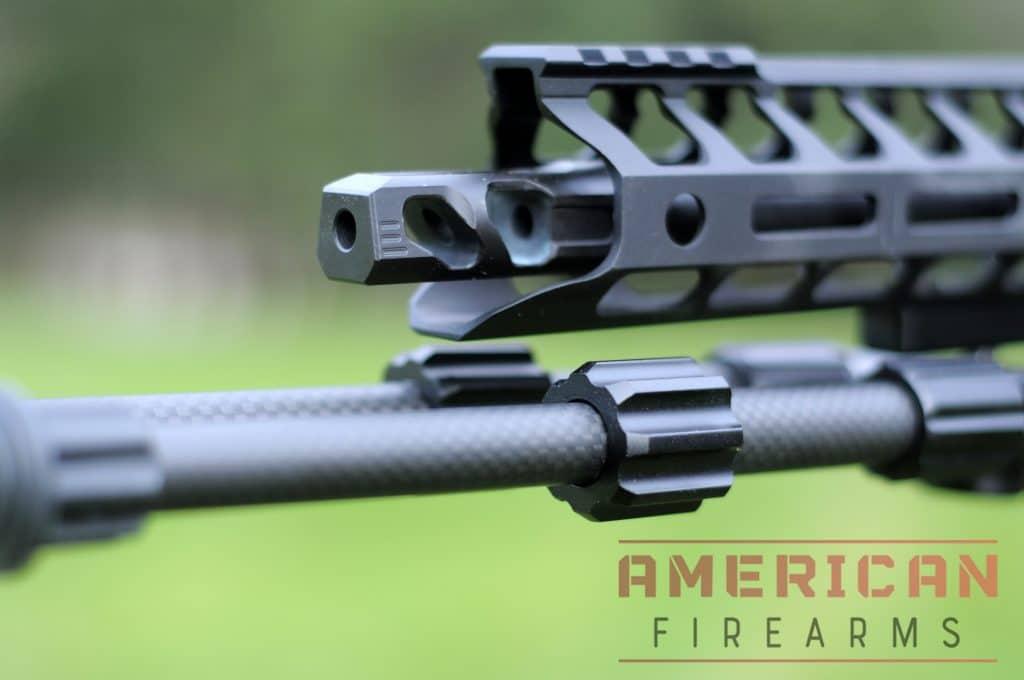
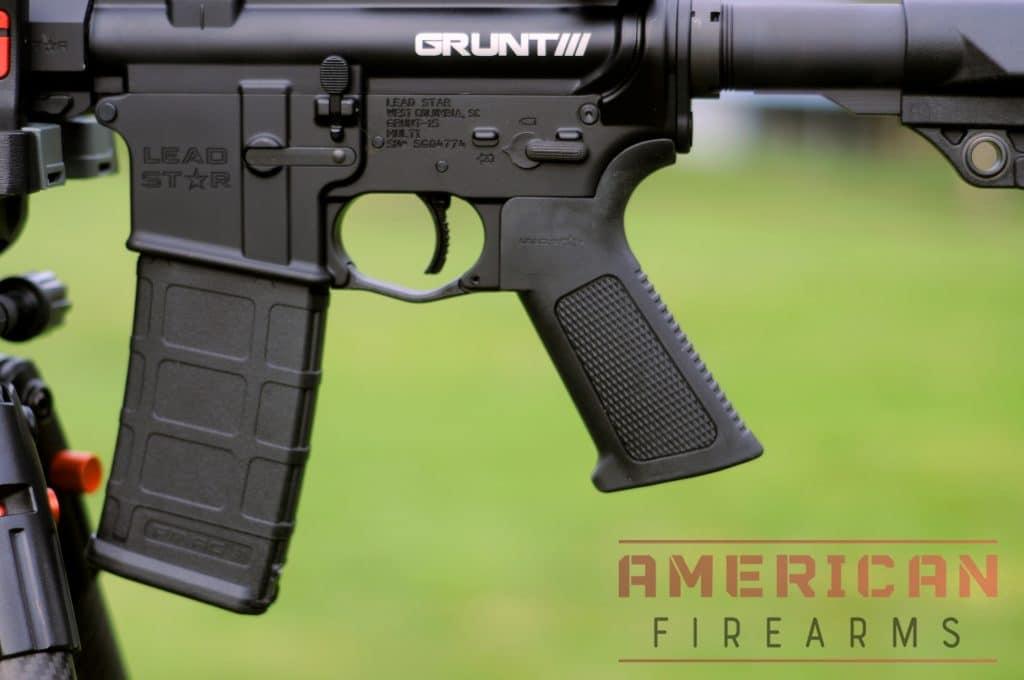
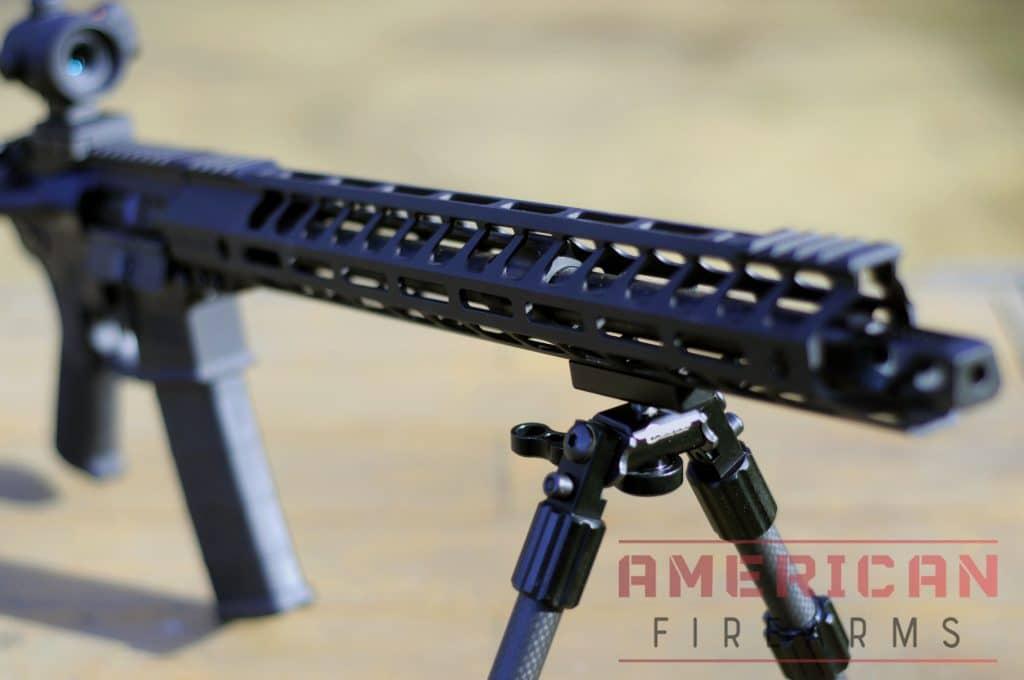
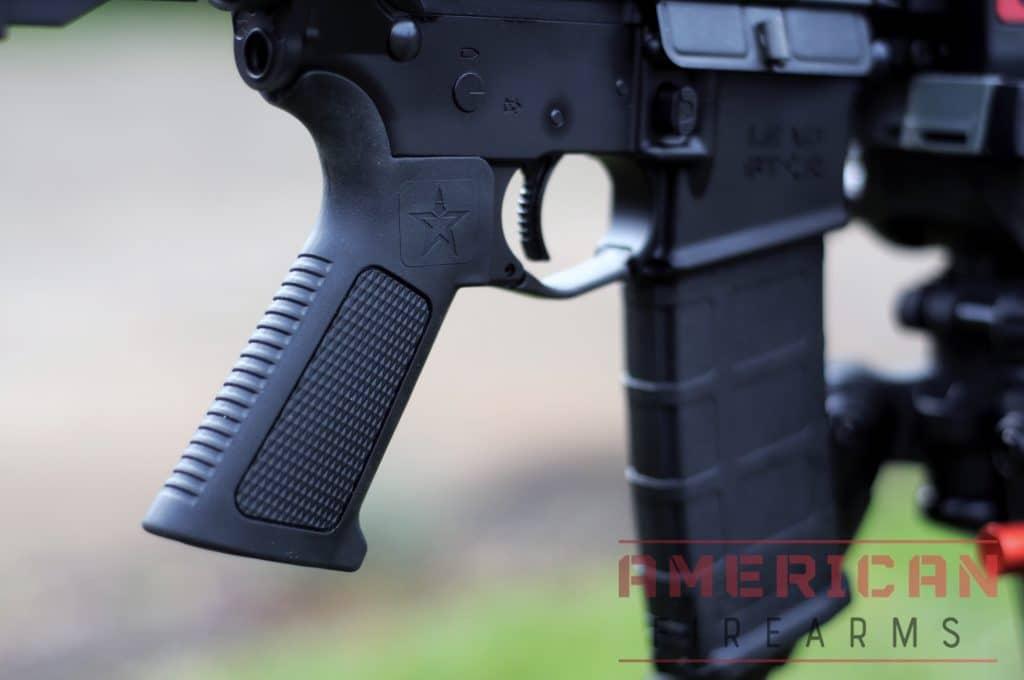
Another area that impressed me was the trigger — it’s a slender girl, with zero — like zero zero — uptake. Super snappy six pounds in weight and breaks when you intend it to. Straightforward reset and predictable as can be. Just a delight.


This being my first time with a Lead Star AR-15, I was incredibly impressed and thought it would clearly make a solid go-to AR for a beginner or seasoned enthusiast.
Shortcomings
The Grunt was great on a lot of fronts, but I didn’t appreciate that the handguard, while lovely, runs out under the muzzle brake, preventing me from testing this with a suppressor.
That fact was made doubly painful by the muzzle brake itself, which — while effective — is supremely loud. This rifle will make you few friends at the range.
4. Best M4 Build: FN M4 Carbine AR-15
Build Quality:
Accuracy:
Ergonomics:
Value:
What we liked:
- US military-grade
- Deep AR expertise
- Standard service rifle of the U.S. Army
- Chrome lined barrel
What we didn’t:
- 16″ barrel is your only option
- Expensive
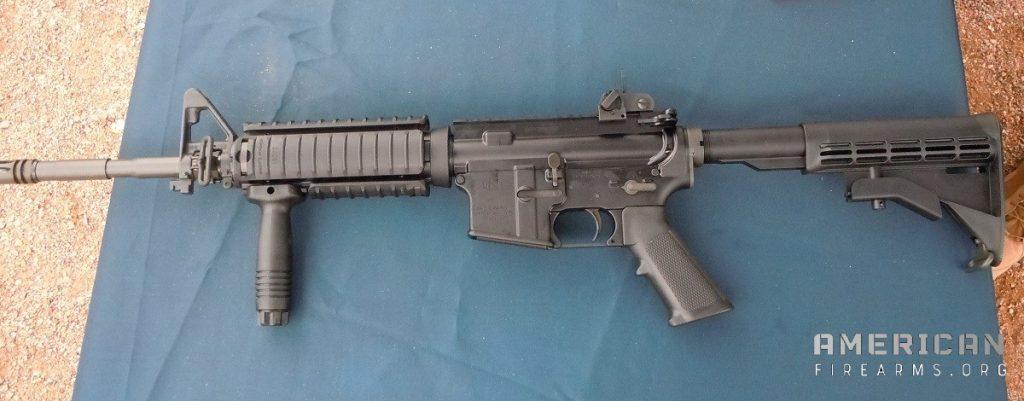
Best known for their SCAR-series rifles, FN has also been one of the biggest AR-15 manufacturers when it comes to making M4/M4A1 carbines for the US Armed Forces for the past two decades and consistently delivers thousands on open contracts every year.
Battle-proven M4/M4A1s
Yes, this is exact same rifle used by U.S. troops across the globe (giggle switch notwithstanding).
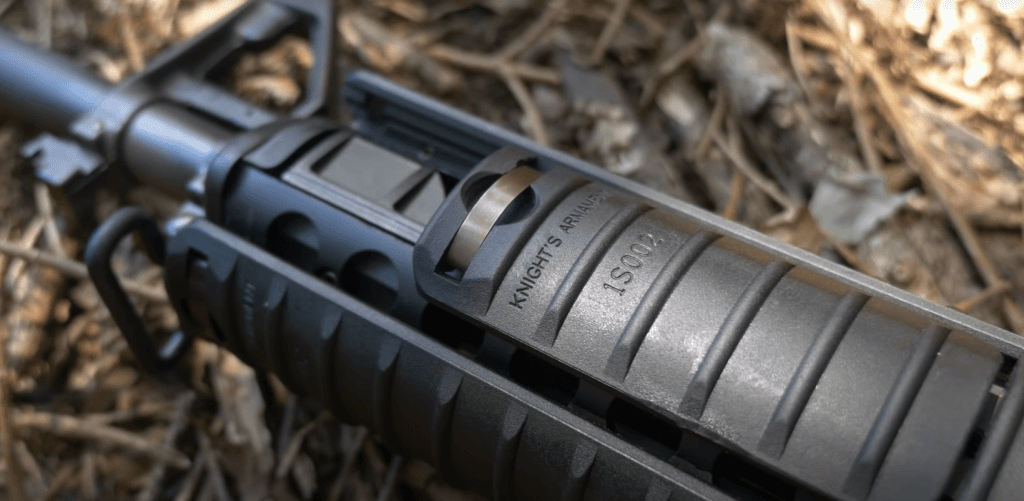
Their semi-auto M4 Collector Series guns, with a 16-inch, 1:7 chrome-lined, cold hammer forged barrel, is about as close as you can get to the Army’s standard rifle on the commercial market without talking to a recruiter. I’ve always appreciated FN firearms for their attention to detail and build quality, and the M4/M4A1 from FN holds that line beautifully.

5. Springfield Armory Saint Victor 5.56 AR-15
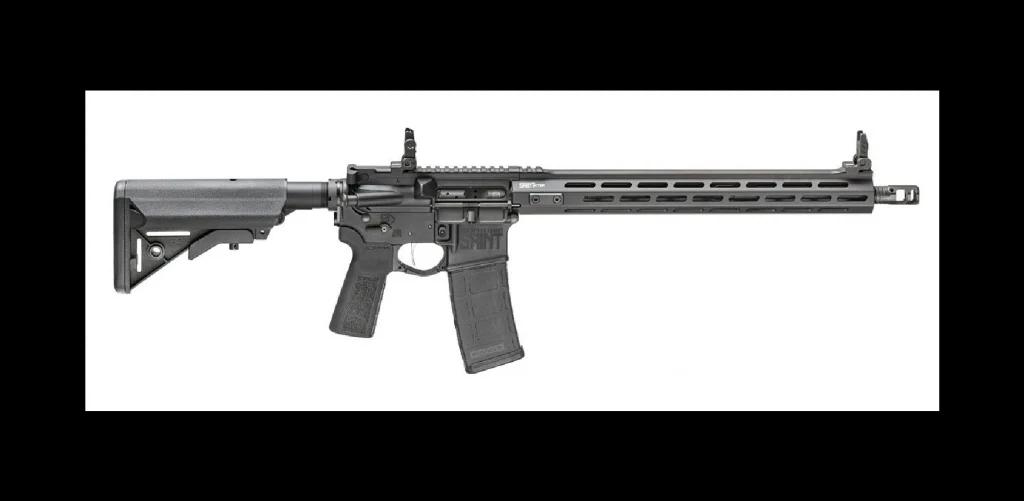
$1116.99

39
AVERAGE
2026 Awards & Rankings
Performance Scores
What we liked:
- Fantastic bang for the buck
- Solid upgrade over base SAINT rifle
- Nickel boron-coated flat-faced trigger makes for smooth, consistent pulls
- Smooth-top handguard makes it comfortable to use without gloves
What we didn’t:
- Tough to get your hands on one
- Short rail up top
From the M1A/M14 to the AR
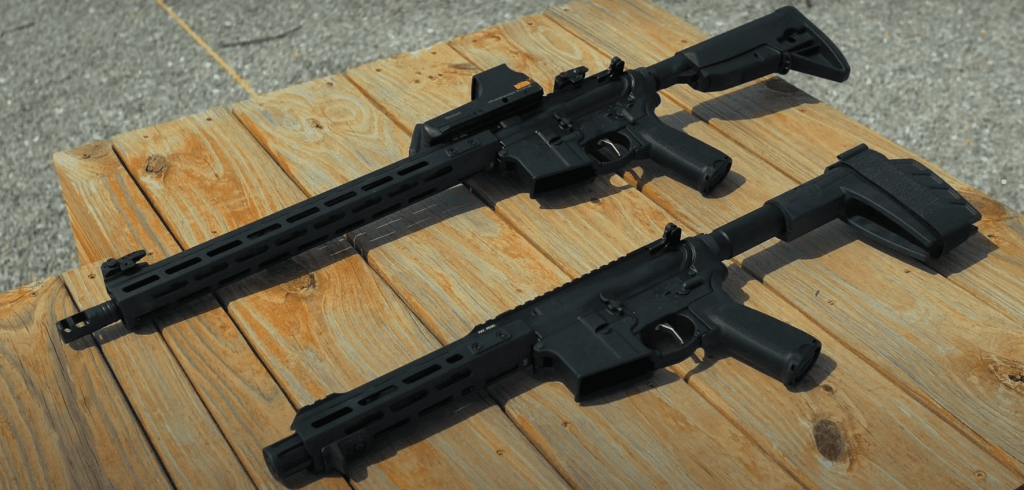
Cleverly taking on the old U.S. Army’s defunct Springfield Armory name in the 1960s and making a name for themselves with semi-auto M1A variants of the classic M14, Springfield Armory, Inc. has been around the block when it comes to ARs and is now one of the go-to AR-15 manufacturers for many people thanks to their mix of approachability, quality, and price competitiveness.

An improvement over the base SAINT rifle
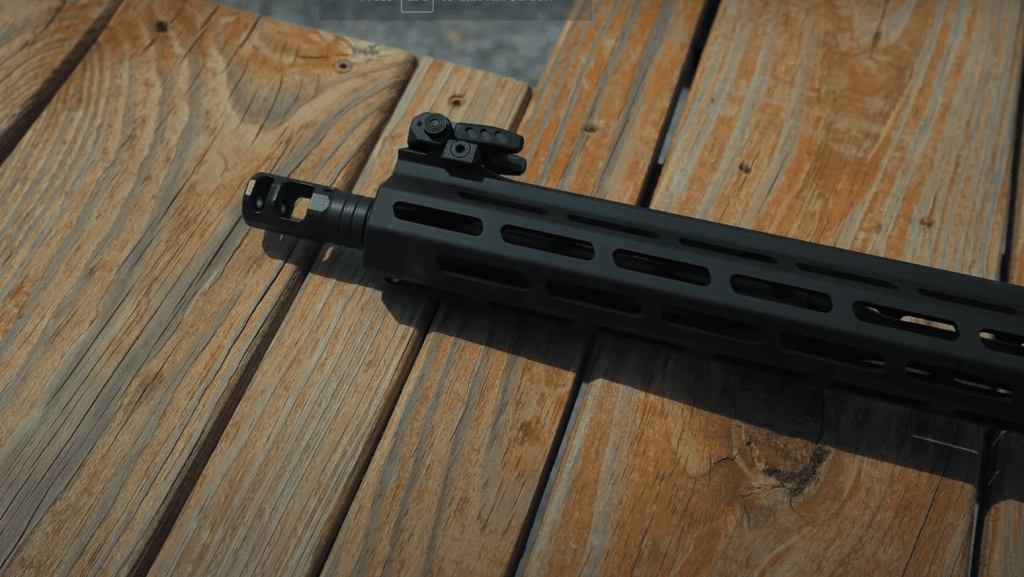
The Saint Victory builds on SA’s impressive SAINT semi-automatic rifle with serious attention to detail, a full-length 15″ M-Lok riddled handguard, mid-length gas system, a nickel boron-coated flat-faced trigger right out of the box, and a B5 SOPMOD stock that incorporates a QD sling mount and ergo cheek weld. The rifle length gas system reduces recoil and is ideal for longer barrels, making it well-suited for long-range shooting.w
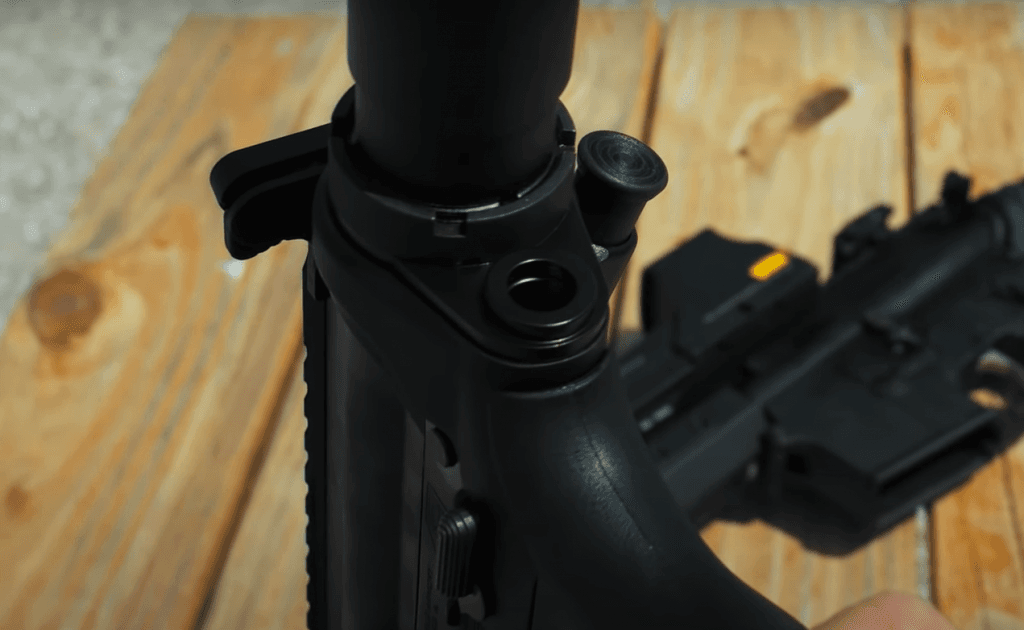
6. Also Great: Colt Law Enforcement 6920 Carbine AR Rifle
Build Quality:
Accuracy:
Ergonomics:
Value:
One of the original AR-15 manufacturers, Colt has certainly not abandoned American’s Rifle. Colt’s baseline M4 series gun, the LE2920 is one of the most encountered AR-15 rifles in the trunk of police cars from coast-to-coast.
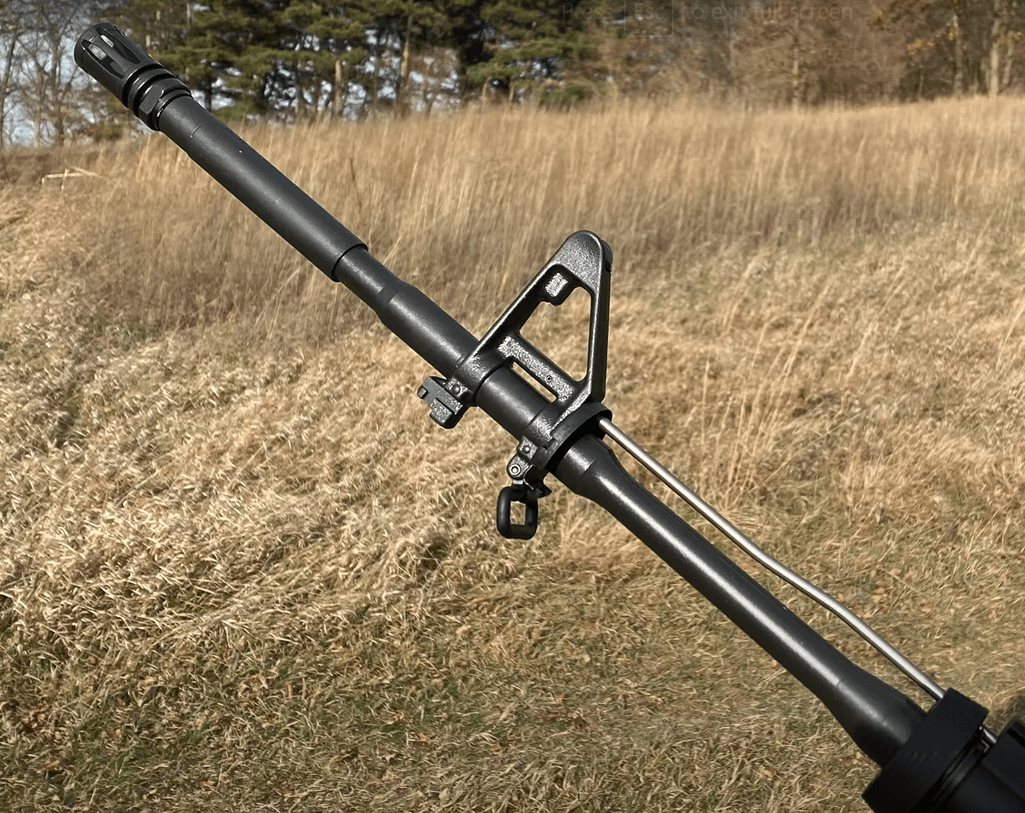
Something of an old-school semi-automatic rifle, it has classic rounded handguards which can put a crimp in the plans of those who want to hand a dozen accessories from their gun, but the LE6920 screams “Mil-Spec” with its 16-inch cold hammer-forged barrel, fixed front sight, and Magpul MBUS BUIS.
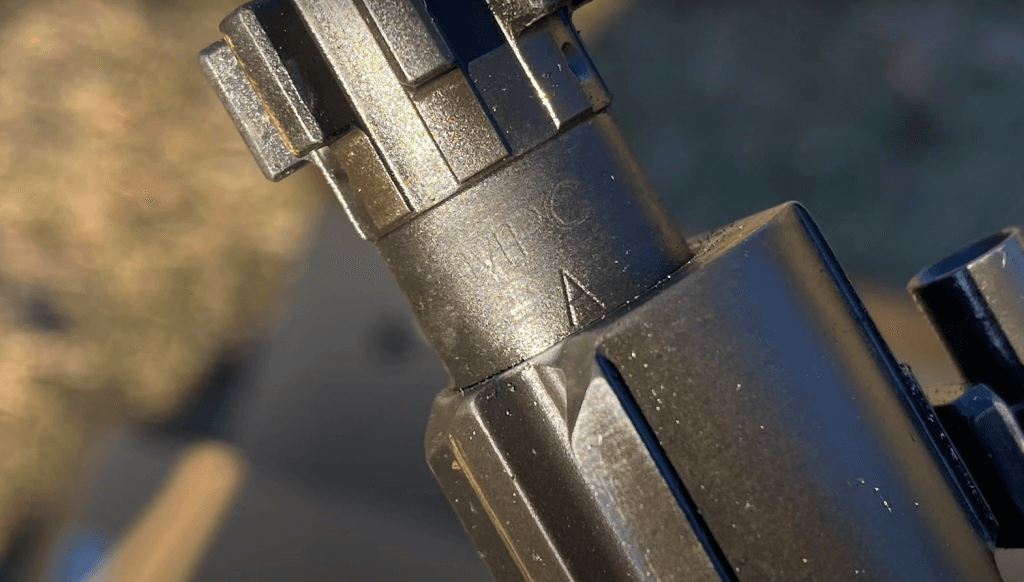
7. .308 Pick: Ruger SFAR

$880.99

41
EXCEPTIONAL
2026 Awards & Rankings
Performance Scores
Specs
- Caliber: .308/7.62 NATO
- Barrel Length: 16.1 inches (carbine); 20-inches (rifle)
- Overall Length: 34-37.25 inches (carbine); 38-41.25-inches (rifle)
- Weight: 6.8 pounds, unloaded (16-inch carbine); 7.3 pounds (20-inch rifle)
- Magazine Capacity: 20+1 standard SR-25 pattern.
What we liked:
- Ruger has delivered when it comes to a light AR-15-sized carbine that comes with the ability to fire the much more ballistically satisfying .308 Winchester.
What we didn’t:
- The innovative series of venting holes in the upper receiver, barrel extension, and bolt carrier leave the user with a very dirty rifle, especially when using a suppressor, while the factory-installed muzzle brake is sure to make no friends on the range– particularly when shooting indoors
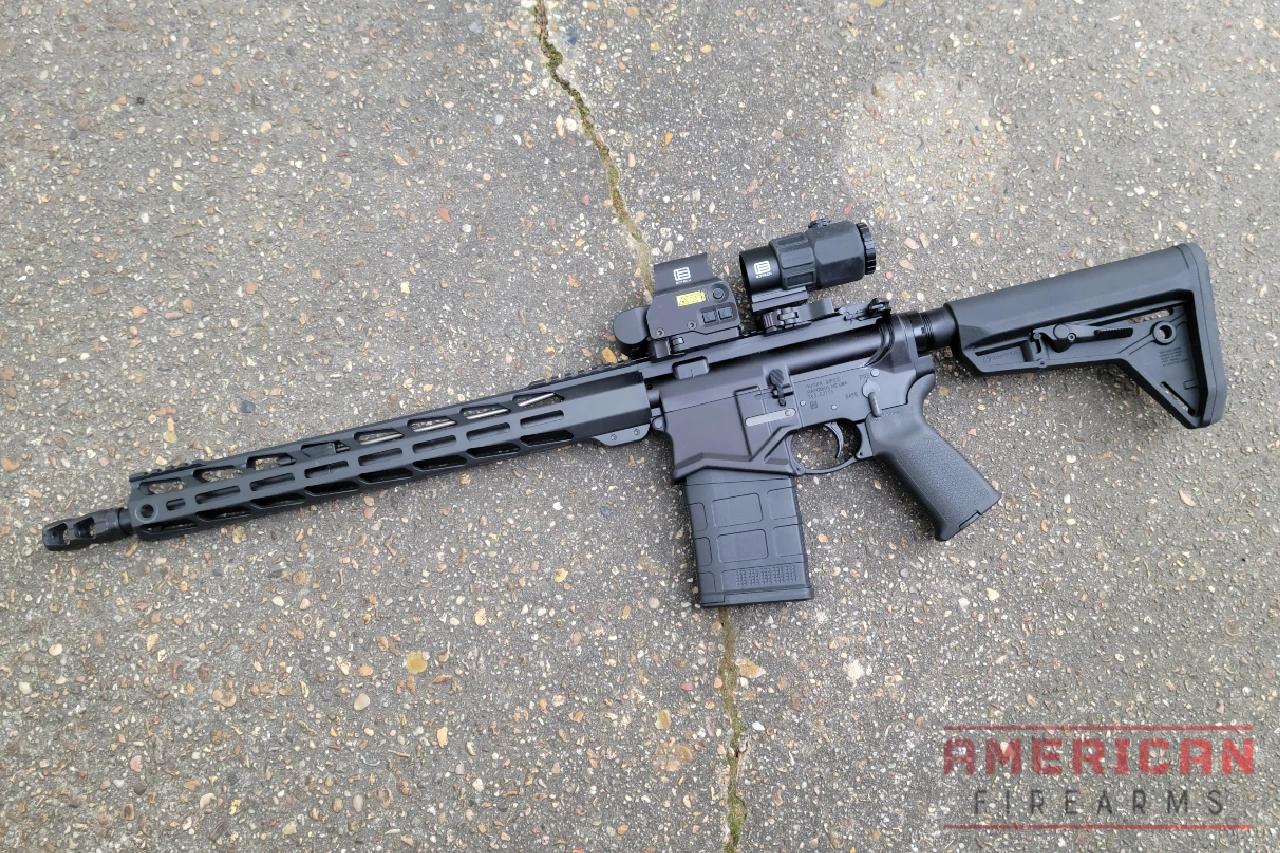
Billed not as an AR-10 but rather a Small Frame Autoloading Rifle in .308 that is nearly the same size as a traditional 5.56 caliber AR-15, Ruger’s SFAR is turning some heads.
Debuted in late 2022 as Ruger’s move to replace their 7.62 NATO/.308 caliber SR-762 piston rifle, the sub-7-pound/34-inch SFAR came in much lighter than the SR-762’s chunkier 8.6 pound/38-inch size while still offering the same 16.1-inch barrel. c
Ruger pulled off the tiny miracle via tweaks in the bolt carrier group and via trimming ounces wherever possible, such as cutting back on the top rail and going with an ultralight skeletonized free-floating handguard.
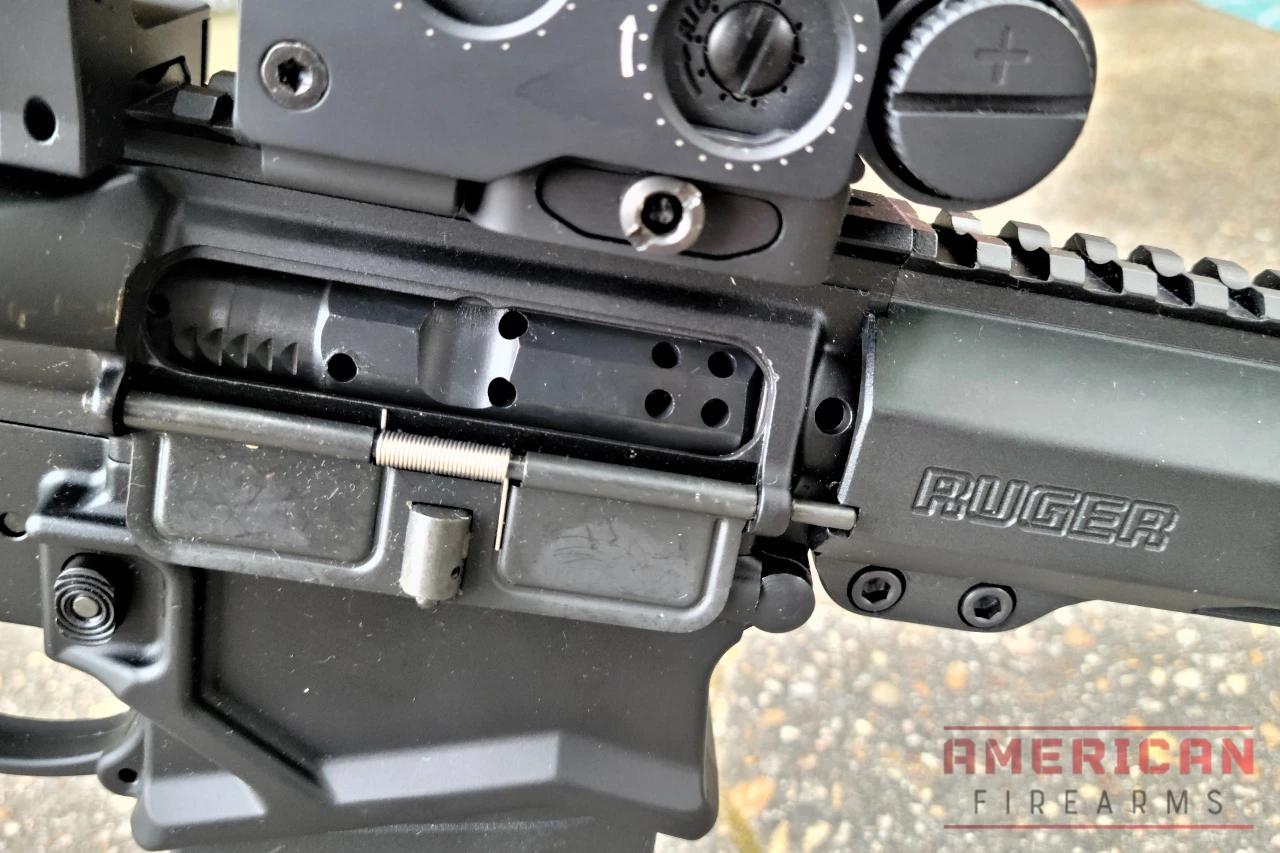
This gas-impingement actioned AR-15-sized .308 still offers an adjustable Magpul MOE SL stock and matching grip, a two-chamber muzzle brake to tame recoil, and a handguard slathered in M-LOK accessory slots.
The 16.1-inch barreled carbine only has two short Picatinny rails on the top of the upper receiver and handguard while the 20-inch model runs a full top Pic rail but comes in at 7.3 pounds, unloaded.
For use with suppressors, the SFAR features a 0.750-inch 4-position rotary-regulator gas block to dial in the gas as needed to match functionality. Finally, it has five sling swivel QD cups.
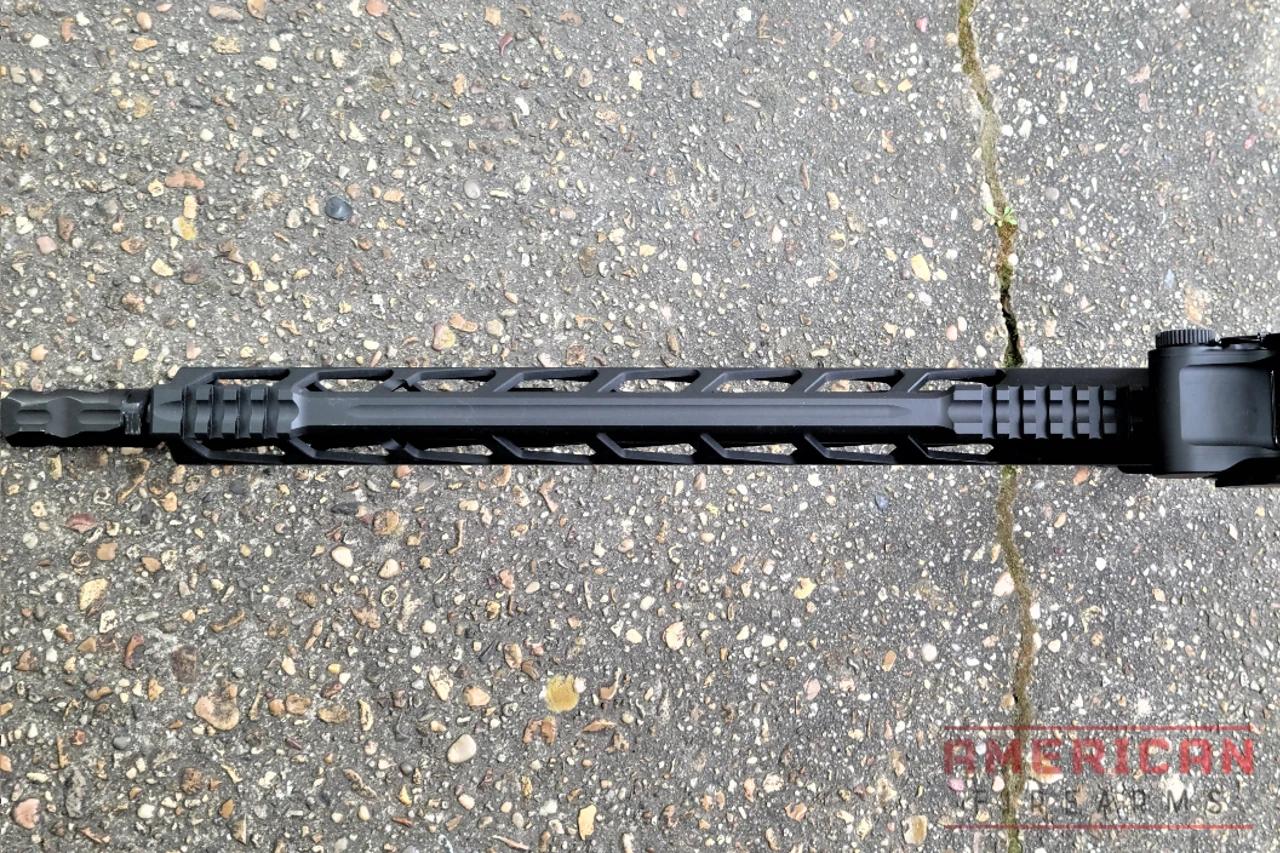
The safety selector switch and bolt release are on the left of the lower while the magazine release button is on the right– as with just about every AR-15. They work as advertised. The charging handle is ambi.
The SFAR in its 16-inch format is probably the lightest commercial .308 autoloader on the market other than the much more expensive POF-USA Revelation. The Magpul furniture is comfortable and easy to use without adding extra weight.
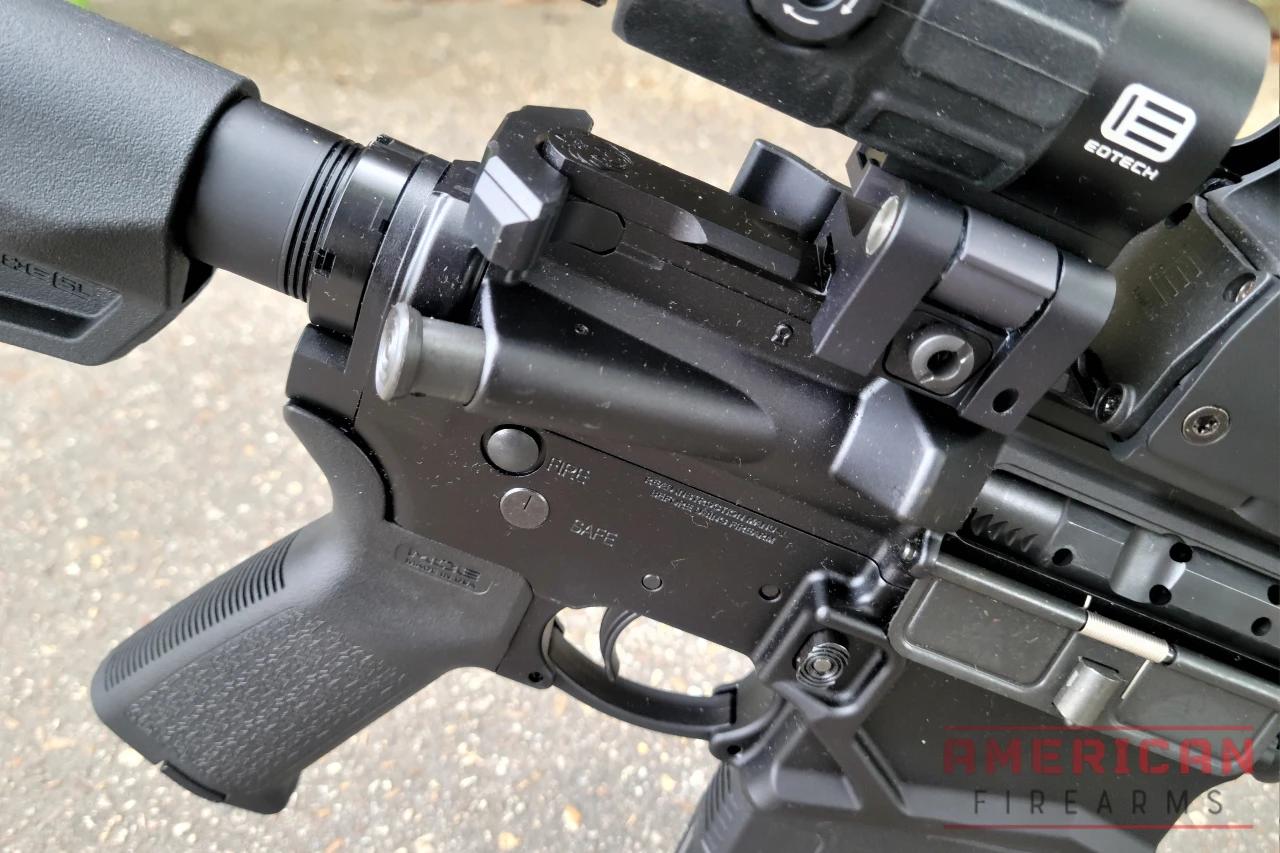
Firing the 16-inch carbine on three different range days with an assortment of 500 hunting, military surplus, and target loads, I found the SFAR to run 400:400 without a suppressor mounted.
However, when the suppressor was mounted (we used a Dead Air Sandman-S), things went off the rail until I experimented and dialed in the gas regulator to match the ammo.
The SFAR ships sans sights but has a top Picatinny rail on the upper receiver and handguard for optics, a red dot sight, and/or bolt-on irons.

Both SFAR models ship from the factory with the Ruger Elite 452 trigger that delivers a smooth, crisp 4.5-pound 2-stage trigger pull. The rifle is also compatible with standard AR-15 packs which means it can be easily swapped out.
I found the SFAR to be almost sub-MOA accurate with match loads from the bench at the 100-yard mark. This stretched as I moved targets and switched to milsurp loads but the carbine was still capable of hitting gongs out to 500 yards.
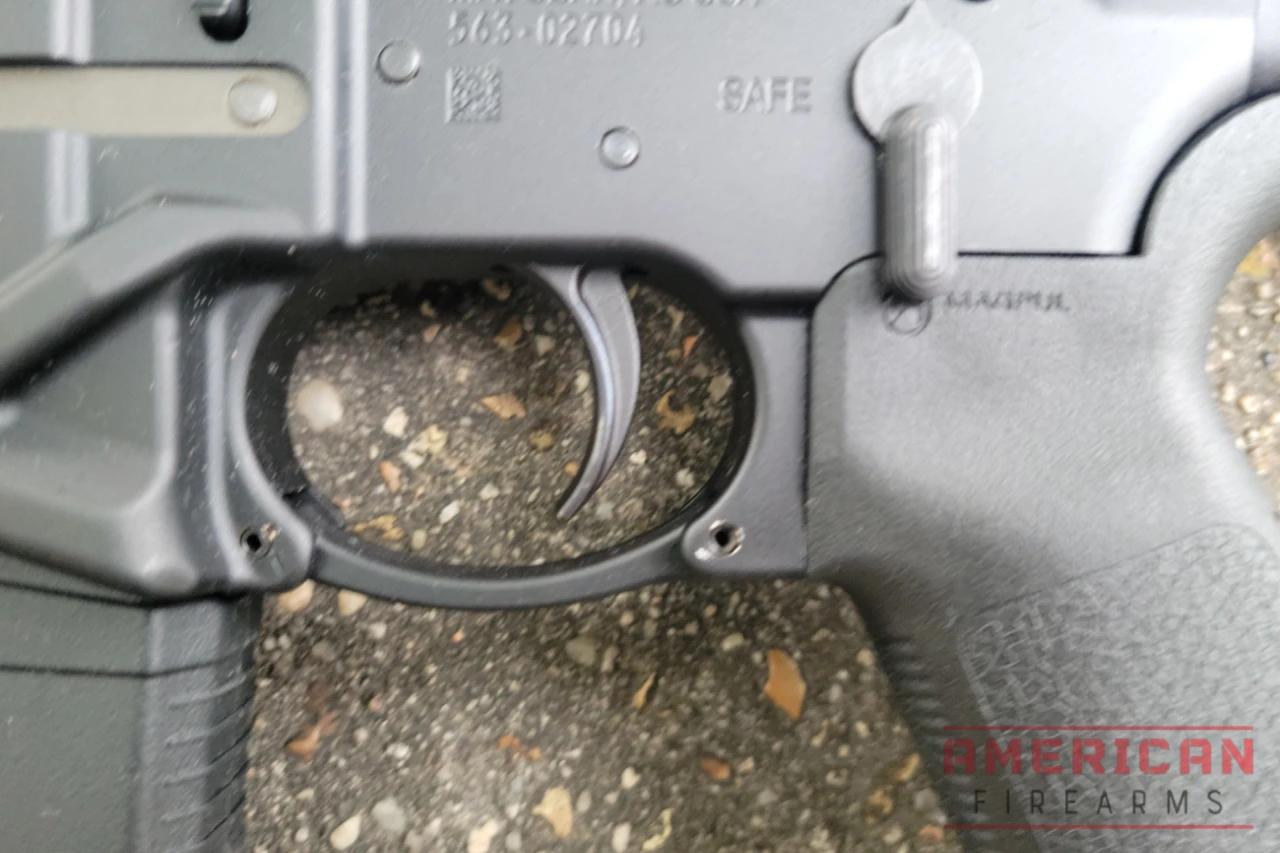
The SFAR is compatible with mil-spec AR-15 trigger groups, receiver end plates, charging handles, pistol grips, and adjustable stocks– which means you can switch up just about anything you want outside of the barrel, BCG, handguard, and receivers.
Want more on the SFAR? Check out our hands-on review.
8. Also Great: S&W M&P 15 Volunteer XV Pro

$930.99

34
AVERAGE
2026 Awards & Rankings
Performance Scores
Back when revolvers were the main game in handguns, Smith and Wesson never tried to put Colt underwater by over-building their guns, but they did offer wheel guns that brought 99% of what Colt did to the table and for less money.

About a decade ago Smith and Wesson applied the same concept to the AR-15 by bringing their M&P15 line to market.
Priced affordably, they hit all the high points you look for in a quality AR in the sub-$1,000 price range. The M&P-15 is a great rifle that punches way above the mid-tier pricing, but their new M&P 15 Volunteer XV Pro really impressed me. This isn’t your ordinary AR-15.
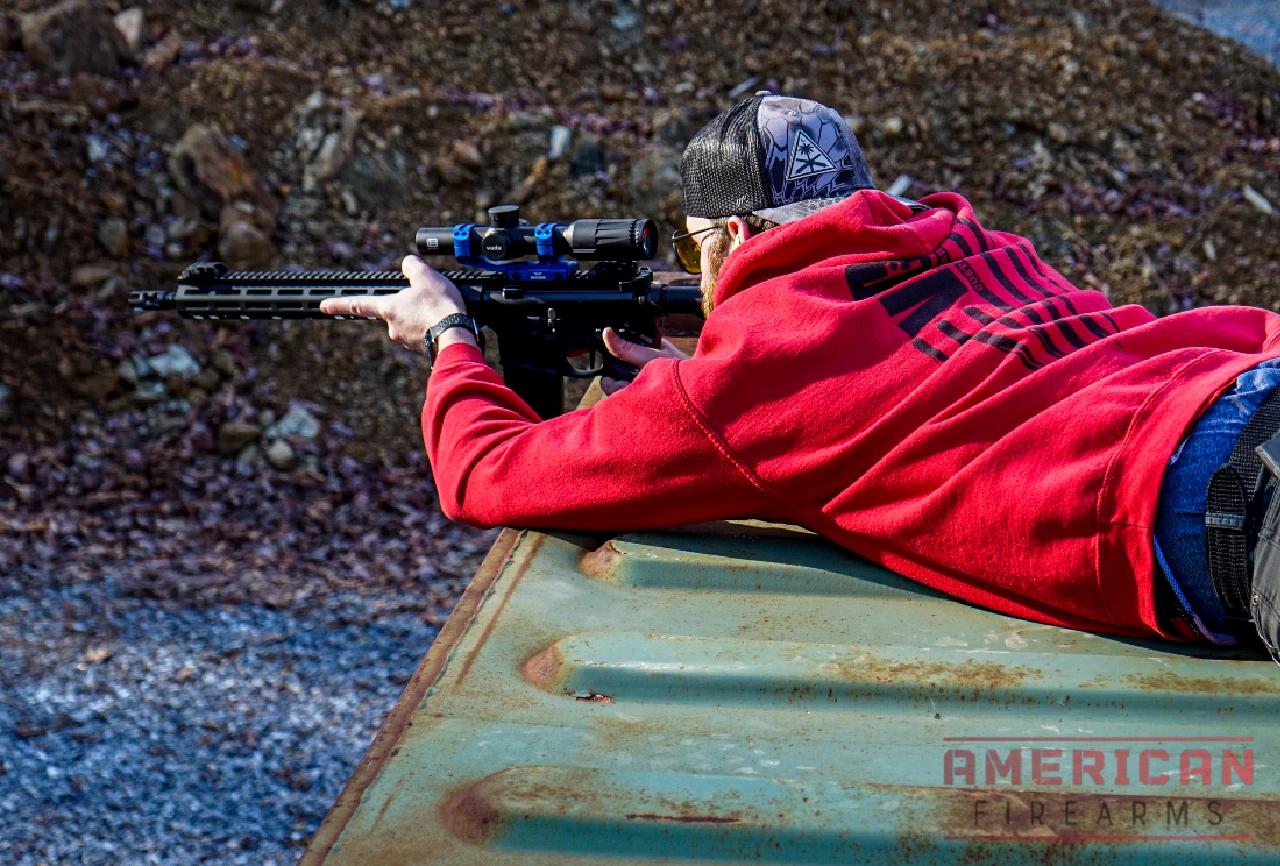
The new Volunteer series from S&W is designed for competition and performance right out of the box. S&W partnered with some larger named brands to build an AR-15 with high-quality parts for those competitive shooters who want a reliable and accurate gun to shoot.
The XV Pro has a 16-inch 5.56 NATO barrel with an internal and external Armornite finish. The 15-inch M-LOK forend is made of aluminum to cut some of the weight out of the gun. The rifle has a mid-length gas system, and the barrel is topped off with a Primary Weapons Systems 556 muzzle brake, which really helps with control if being a touch loud.
One of the best features is the ambidextrous Radian Raptor charging handle for easy left or right-handed manipulations — it’s so easy to manipulate and looks fantastic.
S&W also outfitted the rifle with a flat-faced trigger, 2-inch M-LOK rail sections included, a B5 Systems P-Grip 23 pistol grip, and a B5 Systems SOPMOD stock.
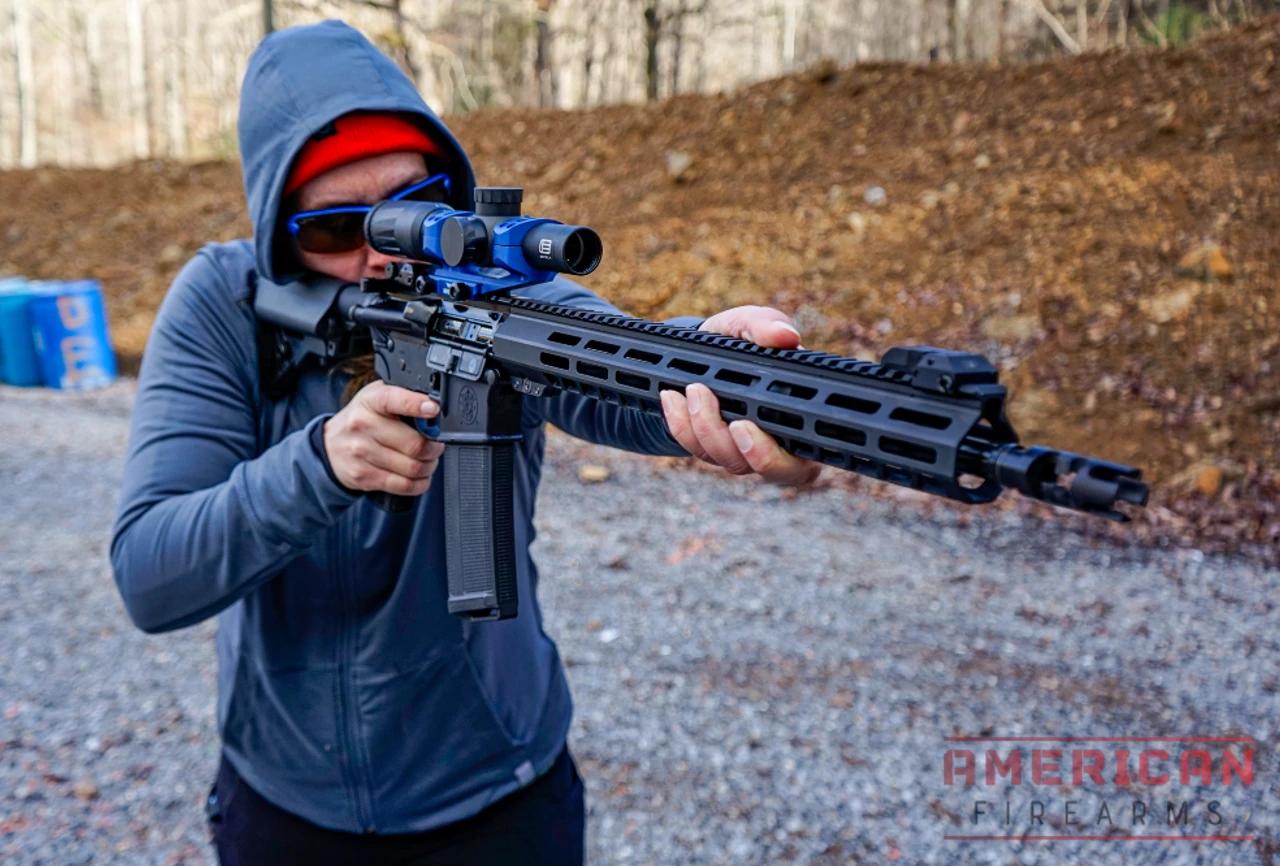
The level of detail Smith & Wesson put into developing this rifle to be comfortable and competitive doesn’t go unnoticed. Simply top the gun off with your favorite LPVO, and you’re ready to race.

The pistol grip is a nice touch that gives most shooters a more comfortable grip angle as it comes more naturally. S&W also includes Williams Gun Sight Company Folding Sights, which I highly recommend keeping on the gun as backup sights if anything were ever to fail.
I found the gun sub-MOA accurate with good-quality ammunition straight out of the box.
9. Budget Pick: Anderson MFG AM-15 Rifle
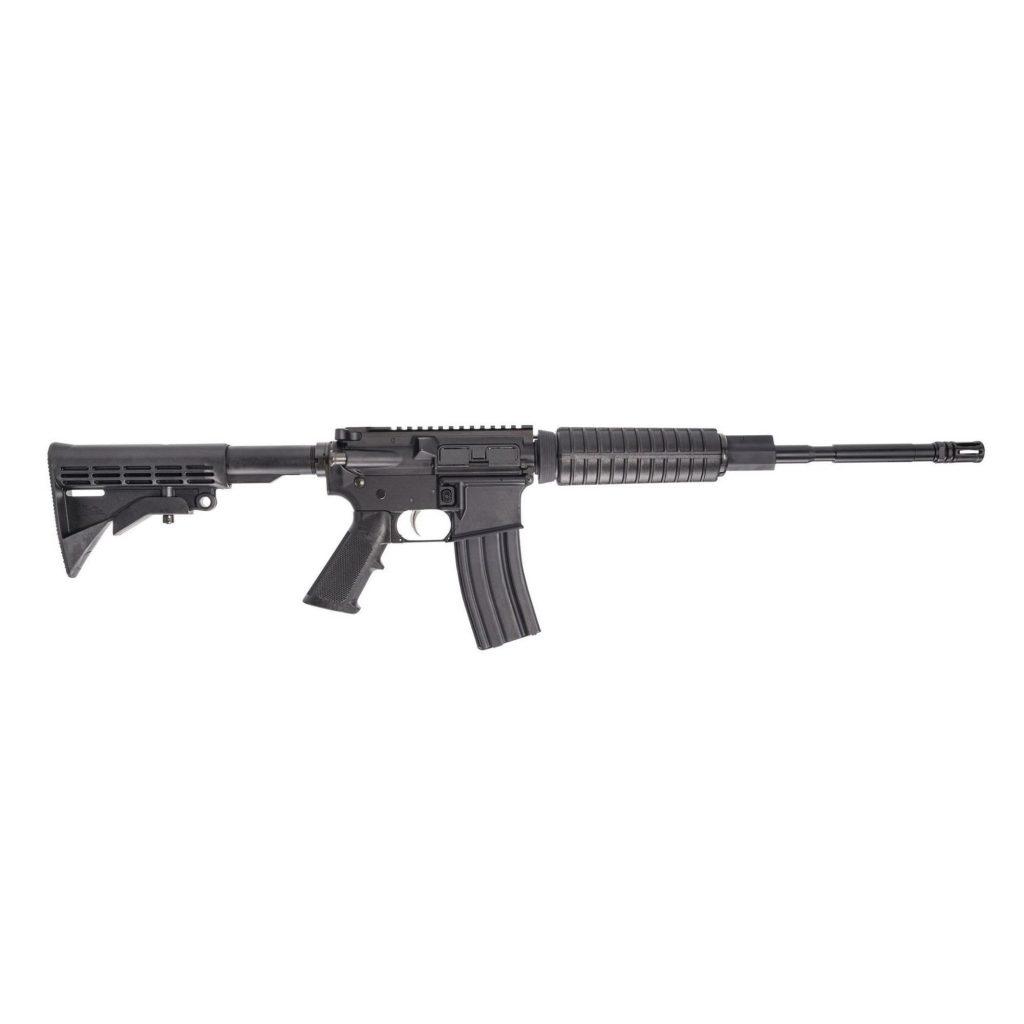
$549.99

45
EXCEPTIONAL
2026 Awards & Rankings
Performance Scores
Kentucky’s Anderson Manufacturing — lovingly referred to as the “Poverty Pony” in AR circles — is well known for lowers that cost less than a dinner for two. Still, their complete rifles are also solid performers. They manufacture all their components in Hebron, Kentucky, which helps them pass the savings onto you.
Their AM-15 is a fantastic budget AR is an inexpensive rifle with a 16-inch 4150 Chrome Molybdenum Vanadium Steel barrel that ends in an A2-style birdcage.
Despite what many folks would consider a “low expectation” rifle, the AM-15 runs a forged aluminum receiver that has been anodized, and the 1-8 twist barrel is parkerized, making for a gun that will hold up well over time. Some of the more subjective aspects — like charging handle feel — aren’t as polished as more high-end guns, but the Anderson is a reliable firearm that may very well win you over in time.
This rifle is a great choice for those who already have an optic picked out, as it includes a flat-top rail on the upper.
One thing I would like to see is some FSB, as the AM-15 does not have a front sight, but if you’re running an optics, it’ll do the trick. Also, the drop-in handguard does not have accessory rails, a common reality with sub-$700 ARs.
10. .223 Wylde Pick: Aero Precision AR15 M4E1 223 Wylde
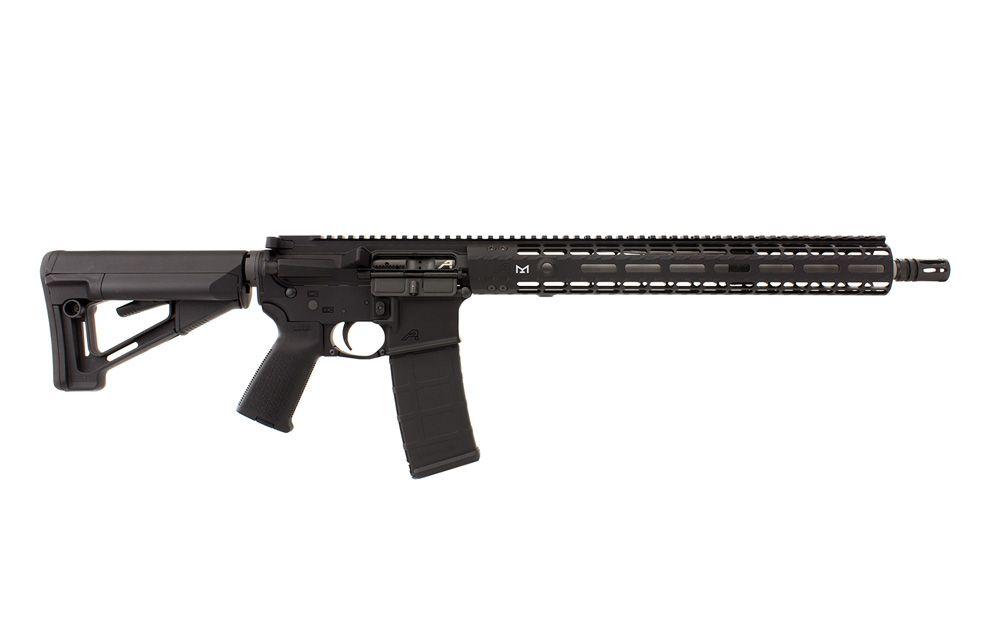
$999.99

48
EXCEPTIONAL
2026 Awards & Rankings
Performance Scores
Aero Precision almost certainly has the most receivers in circulation, and Enhanced Series Upper Receiver is incredibly popular. Their complete rifles are just as reliable and impressive.
This Aero M4E1 is chambered in .223 Wylde, which gives you the option of running 5.56 NATO or .223 Rem. The 16-inch barrel has been bead blasted and is made from 416 stainless steel, and when paired with the low profile gas block and a mid-length gas system, runs as smooth as rifles costing considerably more. It’s a fun rifle to shoot.
The receiver is Aero’s Gen 2 lower, which boasts a flared magazine well and has a tension screw to keep the play out of the upper and the lower. I would have preferred the inclusion of iron sights and– given the flexibility of the .223 Wylde to shoot the longer-ranged .223 Remington — a muzzle brake of some kind, as the A2 feels out of place with the rest of the rifle’s build quality.
The addition of the Magpul STR Stock is great, as you get both a comfortable comb angle and storage for things like batteries to keep your optics running.
The M4E1 is set up to be a perforant hunting rifle, so a scope on top of the ample Picatinny rail would be more appropriate. The lightweight M-LOK handguard keeps weight down while providing room for all the accessories you could want to take into the field.
11. Also Great: Diamondback DB15 FDE Elite AR-15

$927.99

41
EXCEPTIONAL
2026 Awards & Rankings
Performance Scores
This year’s Diamondback’s DB15 has been totally redesigned, and if you simply add up the price of the components they incorporated into the new gun it’s easy to see how much value they packed into their new AR.
The inclusion of the 1-8 twist 16-inch 4140 Chrome Molybdenum Steel barrel, forged 7075 T6 aluminum upper and lower both cerakoted in flat dark earth, an adjustable Adaptive Tactical EX Performance stock, and one of the most aggressive muzzle brakes I’ve seen on a factory rifle in years, it’s easy to see that Diamondback aimed this rifle squarely at those of us who want to spend around $1,000 on an AR without the need to upgrade it. The new DB15 does that in spades.
Many AR enthusiasts are happy to spend $700-$800 on a base gun, and slowly add better components over time to build or customize the rifle. That’s not something you’ll need to do with this gun — you buy it from the factory with all the bells and whistles you want.
12. RECCE Rifle Pick: Sig Sauer M400
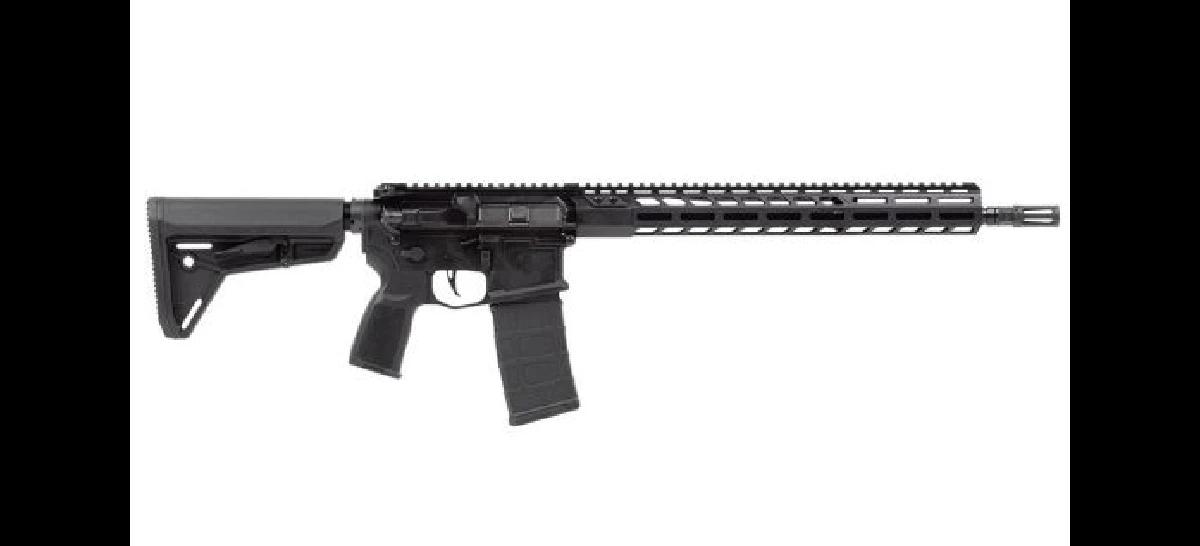
$1023.99

53
EXCEPTIONAL
2026 Awards & Rankings
Performance Scores
Given SIG’s recent spate of military contract wins, their M400 line of ARs benefits from both the duty pedigree and SIG’s commitment to innovation. The M400 line has a few variants, from the budget-friendly Tread to the premium SIG M400-DH3, but my personal favorite (and the one we’ve got a good 2,000 rounds through) is the SIG M400-SDI XSeries, which strikes a balance between the Tread and DH3.
The M400 SDI takes the familiarity of the Tread/AR platform and marries it to the DH3’s competition focus, giving you a rifle that brings competition performance in a common tactical design.
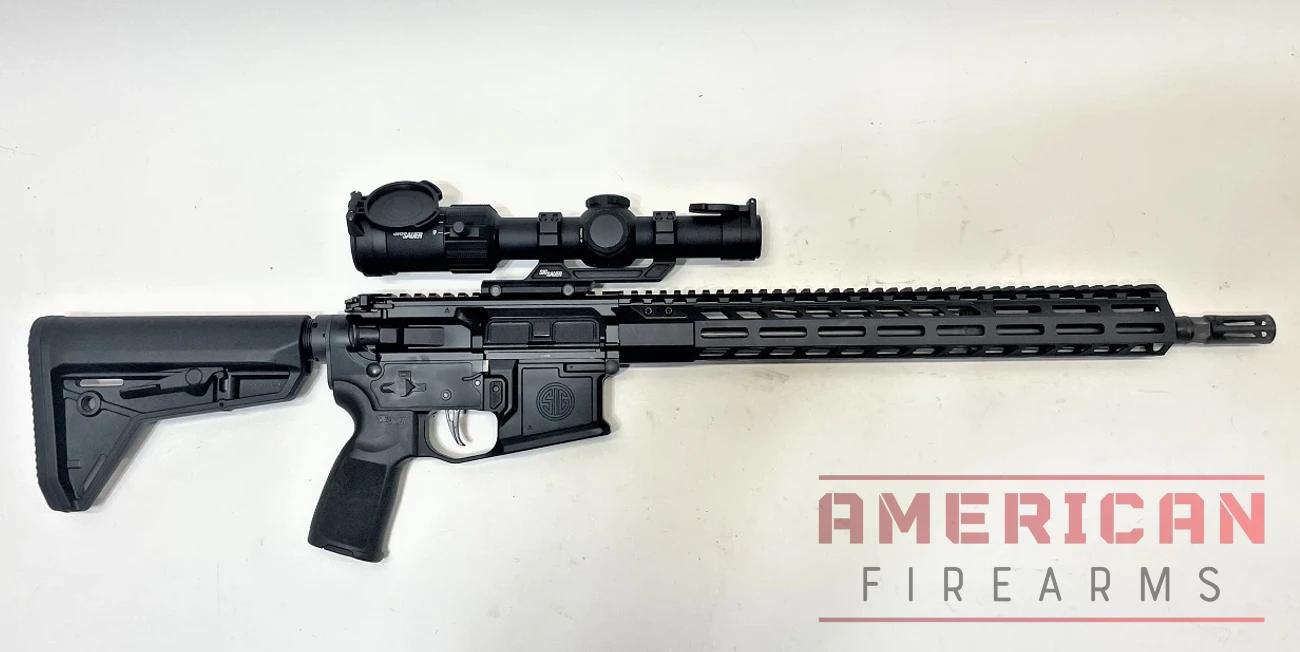
The M400 is incredibly reliable, and M400-SDI XSeries adds a ton of nice upgrades over the Tread — like fully ambidextrous controls, ambi charging handle, and most importantly the sweet 2-Stage Matchlite Trigger that breaks right around 3.5 lbs.

The M400 SDI is an awesome rifle, and while it’s not cheap — often in the $1,200-$1,500 range, the fit and finish is fantastic, making it one of the few fully assembled rifles I would buy.
FAQs
Here’s a list of common questions related to everyone’s favorite black rifle.
What does AR stand for in AR-15?
AR in AR-15 stands for “ArmaLite Rifle,” not “Assault Rifle” as is often mistakenly assumed. ArmaLite is the company that developed the AR-15 in the 1950s. The “15” designates the model number in ArmaLite’s series of firearms.
What caliber is an AR-15?
Most AR-15s are chambered in 5.56x45mm NATO or .223 Remington. However, AR-15 style rifles can be built in various calibers, including .300 Blackout, 6.5 Grendel, and 9mm, among others. The standard 5.56mm/.223 remains the most common.
How much does an AR-15 cost?
AR-15 prices can vary widely based on quality and features. Entry-level AR-15s typically start around $500-$700, mid-range options cost $800-$1,500, and premium models can exceed $2,000. Custom-built AR-15s can cost even more.
What is the difference between an AR-15 and an M16?
The main difference is that the AR-15 is a semi-automatic rifle for civilian use, while the M16 is a select-fire (capable of fully automatic fire) rifle used by the military. AR-15s also typically have 16-inch or longer barrels to comply with civilian regulations.
How long is an AR-15?
A standard AR-15 with a 16-inch barrel typically has an overall length of 32-36 inches with the stock fully extended. This can vary slightly depending on the specific model and components used.
What is the legal barrel length for an AR-15?
In the United States, the minimum legal barrel length for a rifle is 16 inches. Anything shorter requires registration as a Short Barreled Rifle (SBR) under the National Firearms Act, which involves additional paperwork and a tax stamp.
How many rounds does an AR-15 hold?
Standard AR-15 magazines typically hold 30 rounds. However, capacity can range from 5 to 100+ rounds depending on the magazine. Some jurisdictions limit magazine capacity, often to 10 or 15 rounds.
What states ban AR-15 rifles?
As of 2024, several states have restrictions or bans on AR-15 style rifles, including California, New York, New Jersey, Connecticut, Hawaii, Maryland, and Massachusetts. Laws can change, so it’s important to check current local regulations.
How does an AR-15 work?
AR-15s typically use a direct impingement gas system. When fired, some of the gas from the burning gunpowder is redirected through a small hole in the barrel to push the bolt carrier group backward, ejecting the spent casing and chambering a new round.
What is a buffer tube on an AR-15?
The buffer tube, also called the receiver extension, is the hollow tube that extends from the lower receiver and houses the buffer and recoil spring. It’s crucial for the cycling of the rifle and also serves as the attachment point for the stock.
Recap
Given the size and scope of the AR world and its standing as a consistent target of ever-evolving gun laws, finding the right AR-15 for you can be intimidating, especially when you’re looking for your first AR, starting down the long road of building your own from an AR build kit, or just concerned about the ever-evolving world of gun control.
In the end, whenever one of my friends wants recommendations for choosing an AR-15, I always recommend doing your homework, spending some time at your local gun store, and making sure your rifle is designed for your needs. The modular design of the AR means you can build a big game hunting rifle, one for long-range precision, a competition gun, a home defense gun, something for close-quarters combat, or anything in between.
I recommend buying a complete rifle, spending time at the gun range with it – then getting another!
Lots More Reading
- NRA Museum, Colt AR-15 Rifle
- National Park Service, U.S. SUBMACHINE GUN XM177 “COMMANDO”
- NRA Museum, Guns of Vietnam and Desert Storm
- Defense Standardization Program, FAQs
- Nathan Schueth, 4150 Carbon vs 416-R Steel
- Otai Steel, 9310 steel vs 8620
- Stag Arms Blog, Commercial vs. Mil-Spec Buttstocks
- Peter Luff, Troops in Afghanistan get new lightweight rifle magazines
- Howard Precision, Difference Between 6061 and 7075 Aluminum
- FBI.gov, NICS Background Checks By Month/Year
- Wikipedia, Ammo Shortage in the U.S.
- NPR, Kyle Rittenhouse Trial In Kenosha Killings Delayed Until November
- NRA Blog, How to Pick the Right Round For Your AR-15 Barrel
- SADJ, Barrel Length Studies in 5.56 NATO Weapons
- Ballistics by the Inch, 5.56 Ballistics by Barrel Length
- KAK Industry, 4.75″ AR Barrel
- Gun Digest, Articles and Books on AR-15s and Tactical Rifles
Updated
May 22, 2025 — We dove deeper into the caliber options provided by our recommended brands to help clarify which brands support specific calibers most effectively.
Sign up for our newsletter
Get discounts from top brands and our latest reviews!

